It so happens. Heidi Hartmann first visited the Karoo Garden more than 35 years ago and it has been very difficult for me to pay attention both to her mesembs and all my other plant interests. In the last few years she has been working on Acrodon. This is a small genus of only 5 to 6 species that occurs in the Southern Cape with much the same distribution and habitat requirements as Haworthia. She had had some second thoughts on a species she had described as Acrodon calcicola and intimated that she needed photographs to show what proves to be detaching fruits (capsules). So off we went to get that northeast of Bredasdorp at Rooivlei. But Nick Helme had about a year before sent me an intriguing picture of a greenish soft looking plant from near the DeHoop Reserve entrance road to the east. I had considered that it might be an equivalent of the H. muticaXmirabilis population at Die Kop (MBB7500) that Ingo Breuer usefully described as H. hammeri . I use the name with great trepidation because to say what is correct usage is difficult. It could pass as a cultivar name, a varietal name or a form name. I am quite sure it has its origins in the interaction of two species and that is what a botanical name should reflect that; thus H. muticaXmirabilis or however else the nomenclaturists may require. So these journeys are never without distractions as Rooivlei itself is a remarkable site. I find that I have few images of the populations of Haworthia that occur there. The product is nearly all pictures/images.
Set 1. MBB7941 H. mutica Ouplaas, Wydgelee. (figs 1-45)
This population is just 3km west of the Die Kop MBB7500 population. There are two intervening H. mirabilis populations; one small, one large and scattered, and a third a little to the north of east and more to the north. But that species is well covered in an Update article and my attention here is on H. mutica. Why Nick Helme’s plant was so green and soft-looking is a bit odd because the population of H. mutica there at Ouplaas is quite one of the largest and most dramatic of any that I have seen of the species. Daphne and I spent hours examining, re-examining and exclaiming at the sheer beauty and variation of the plants. There were plants squeezed into cracks and flattened so that one could not see any centre, others in the flat clayish areas between the exposed vertical shale ridges, but mostly in the shale. The site is north-facing and so is very hot and dry in summer. The plants had just finished flowering.
There was one particular image (fig. 24) I have used to show five different leaf-end shapes on the same plant.
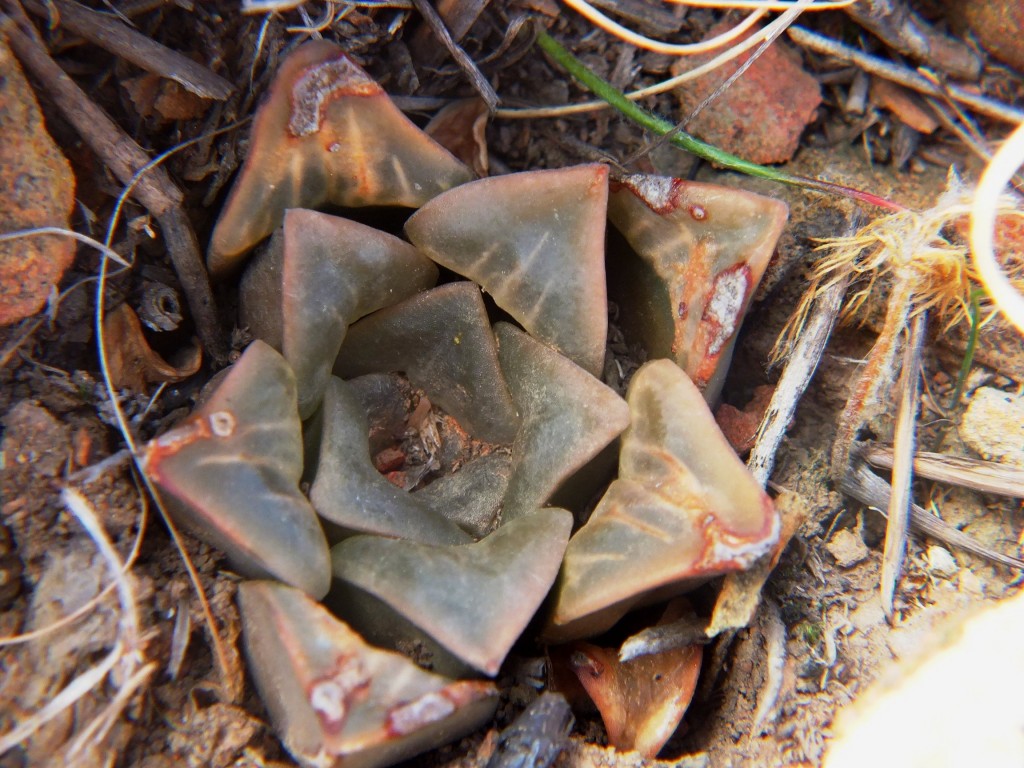
Fig. 1 7941 Ouplaas 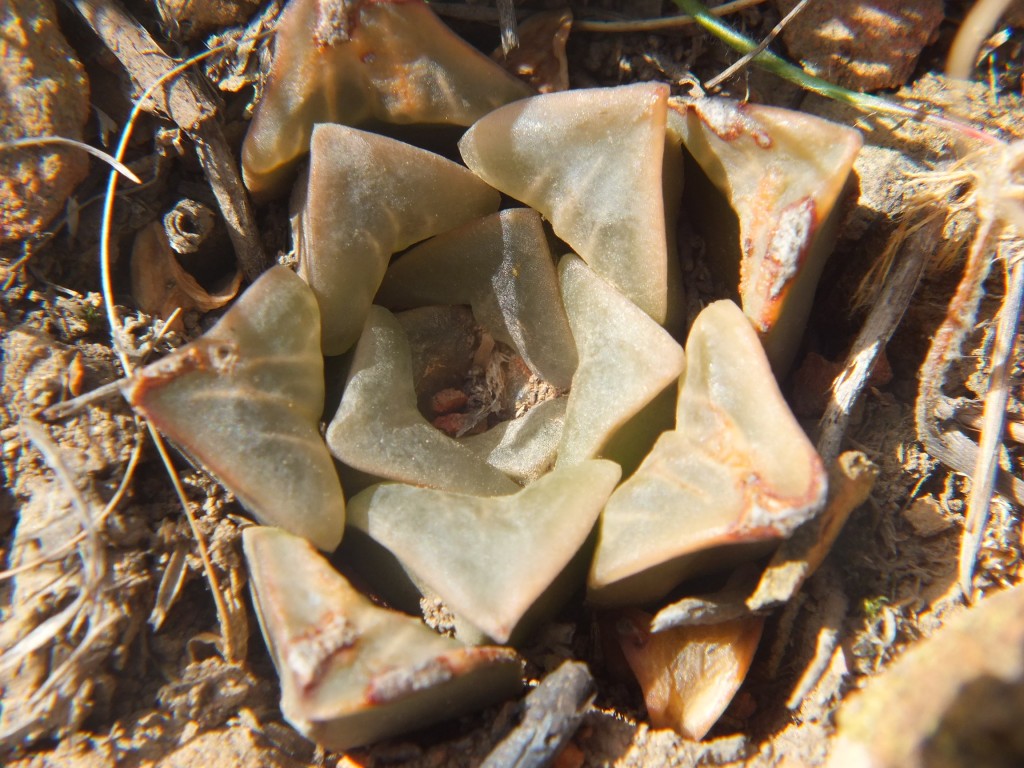
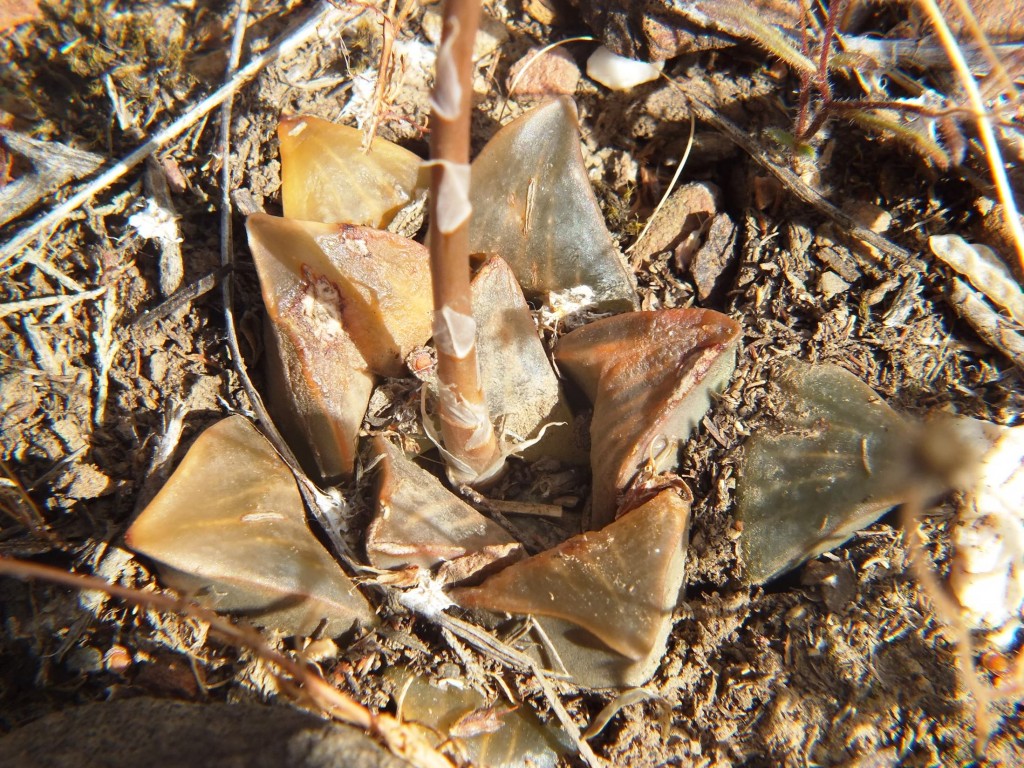



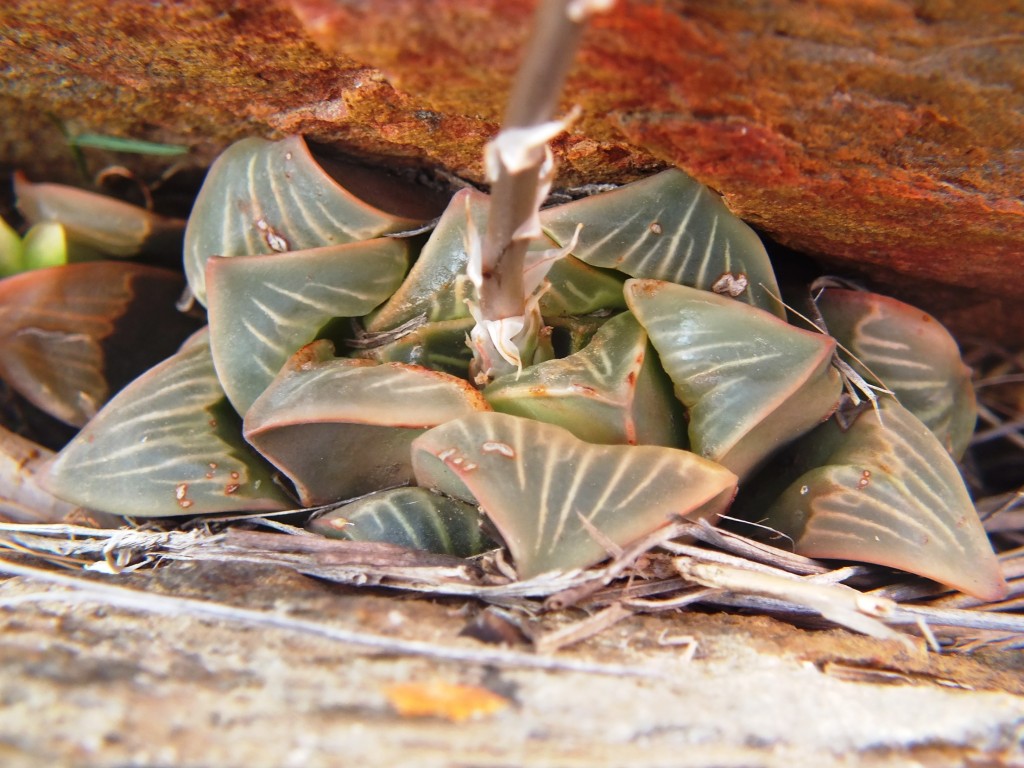
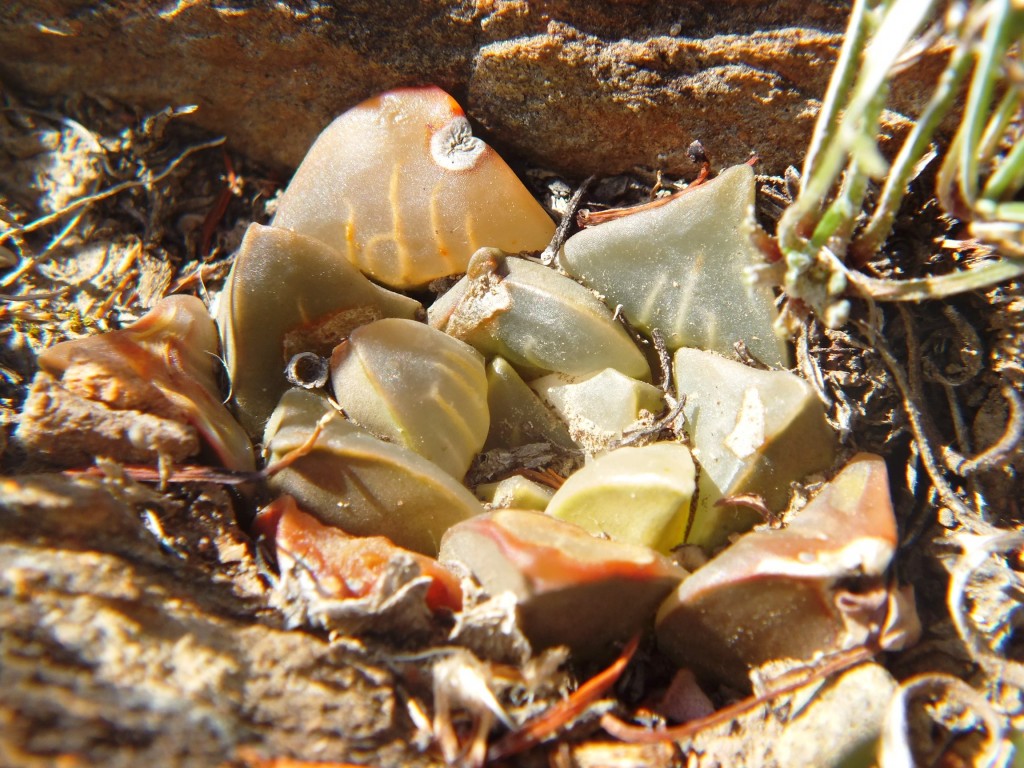
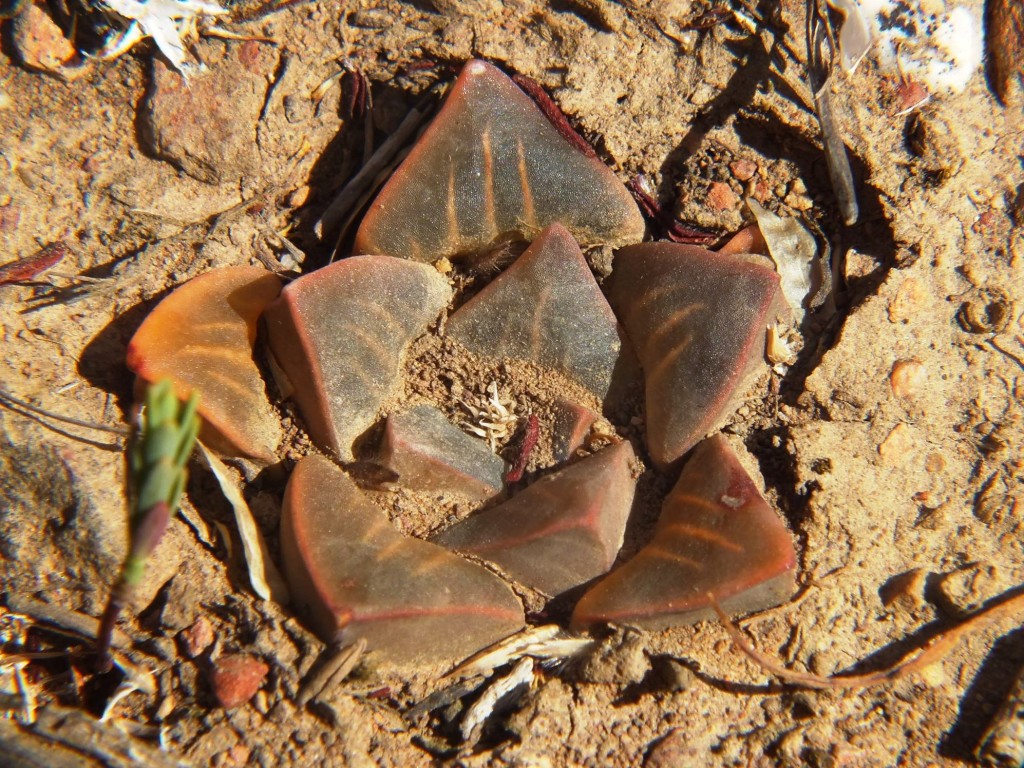
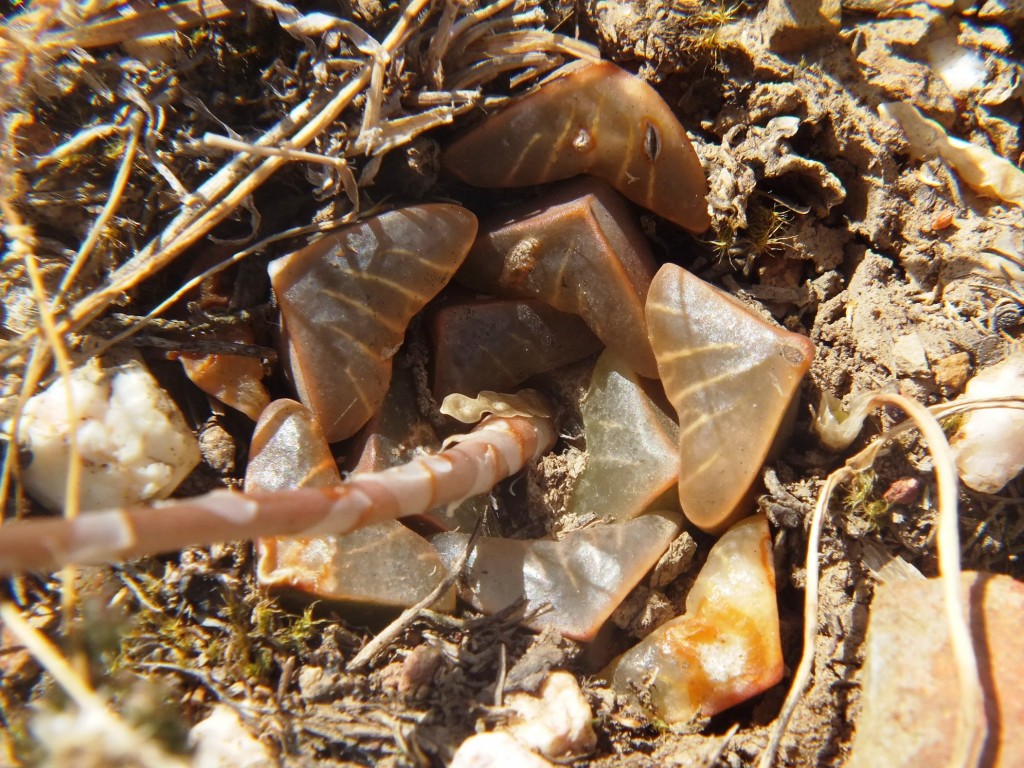
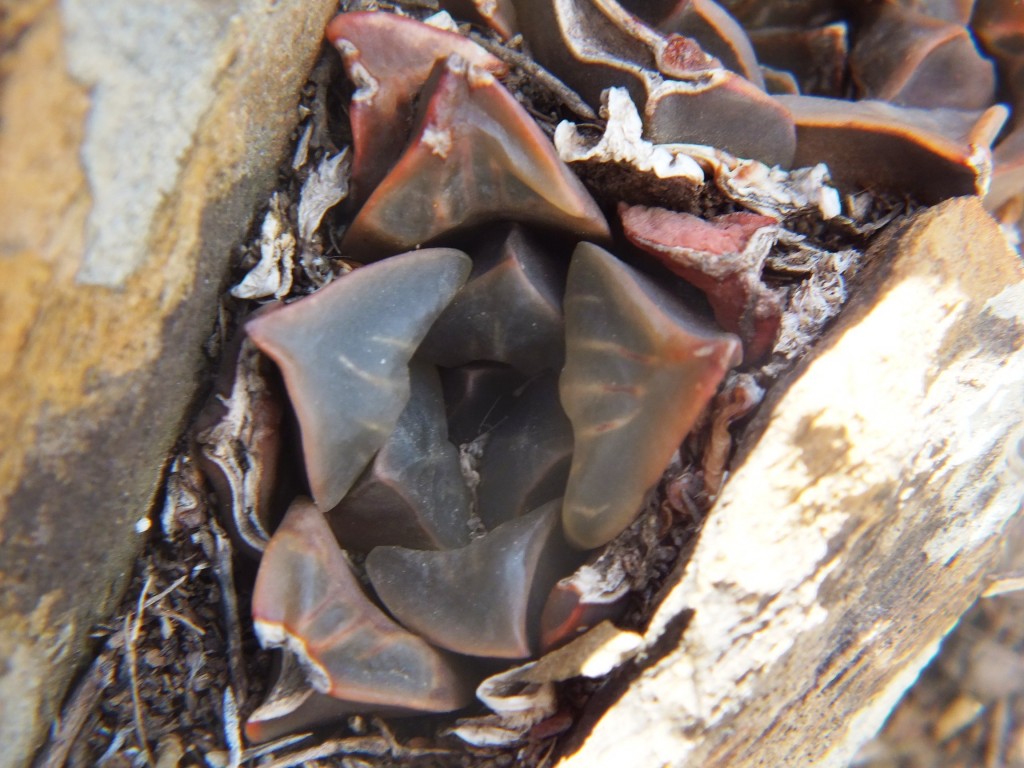

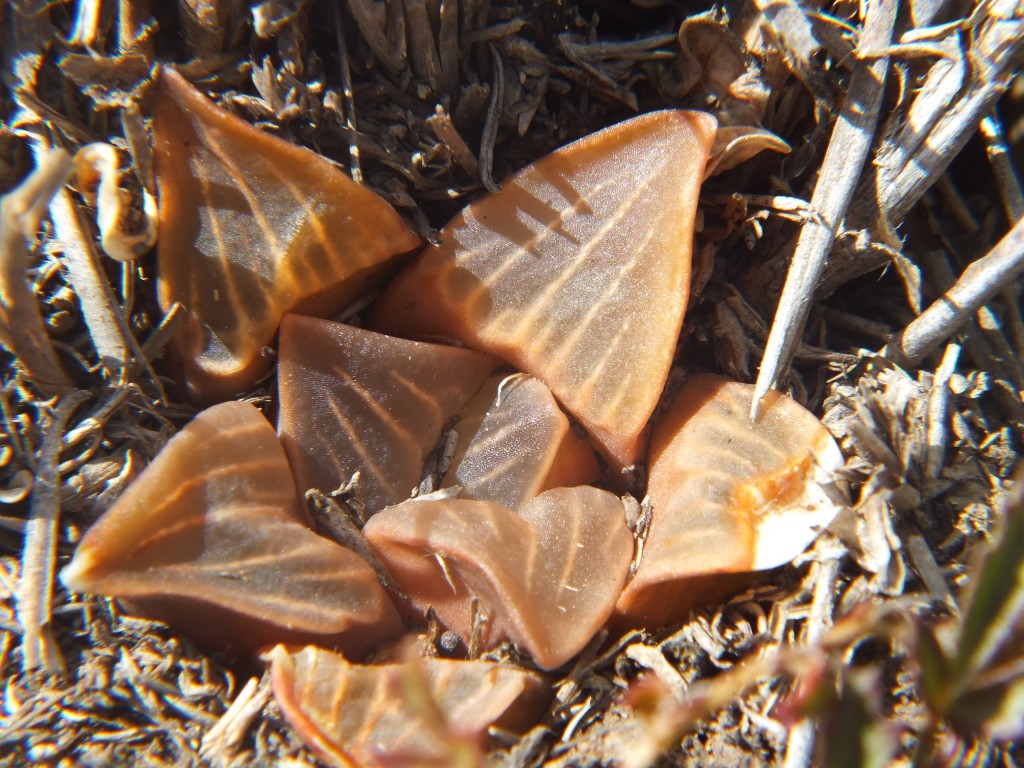
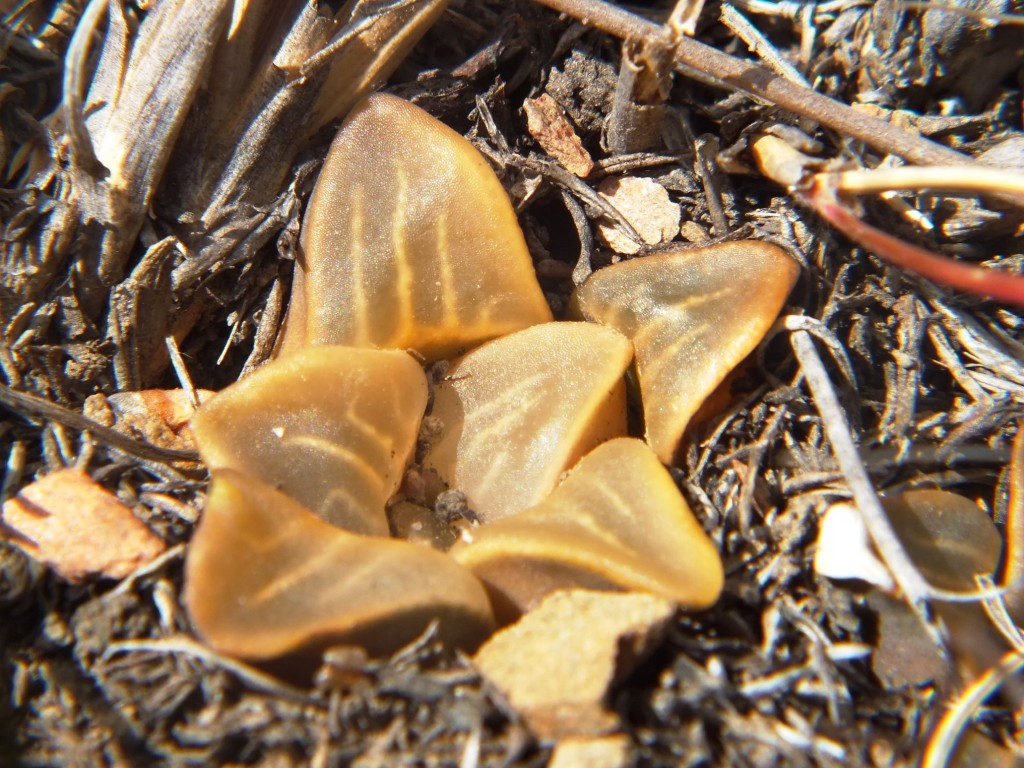
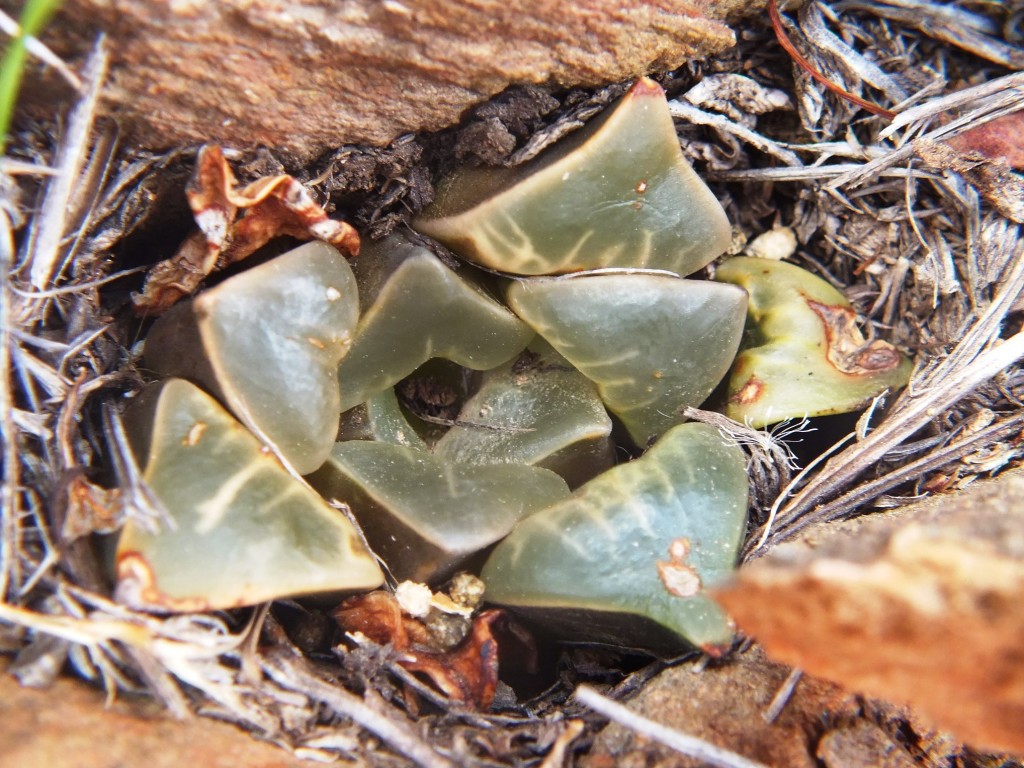
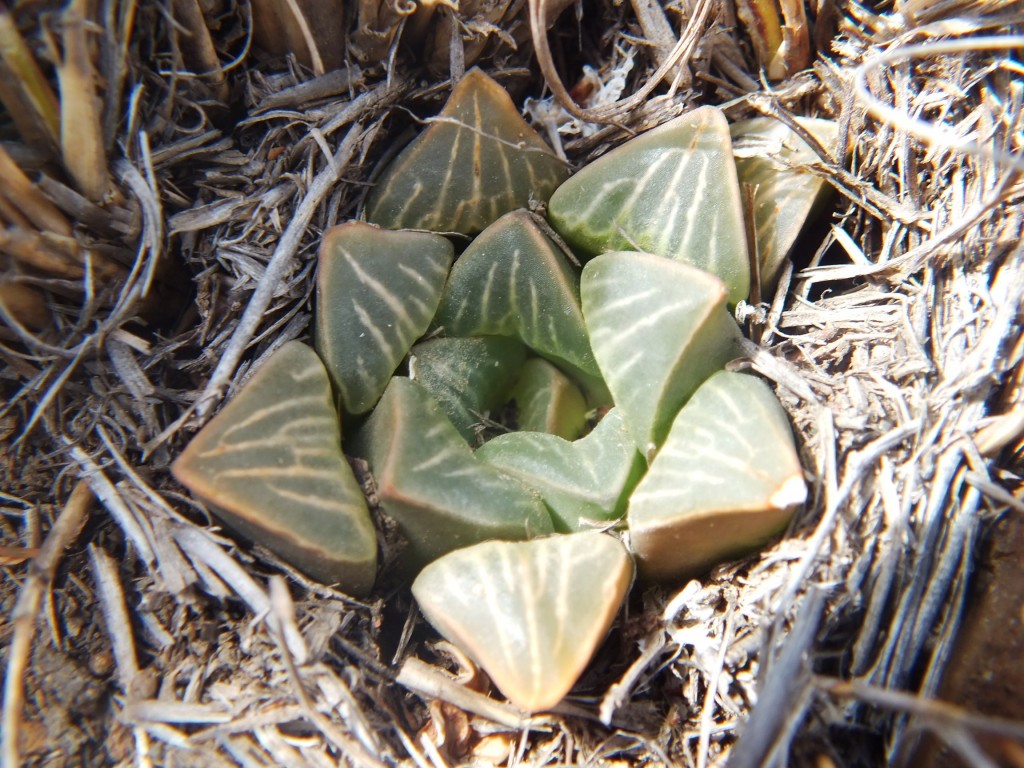
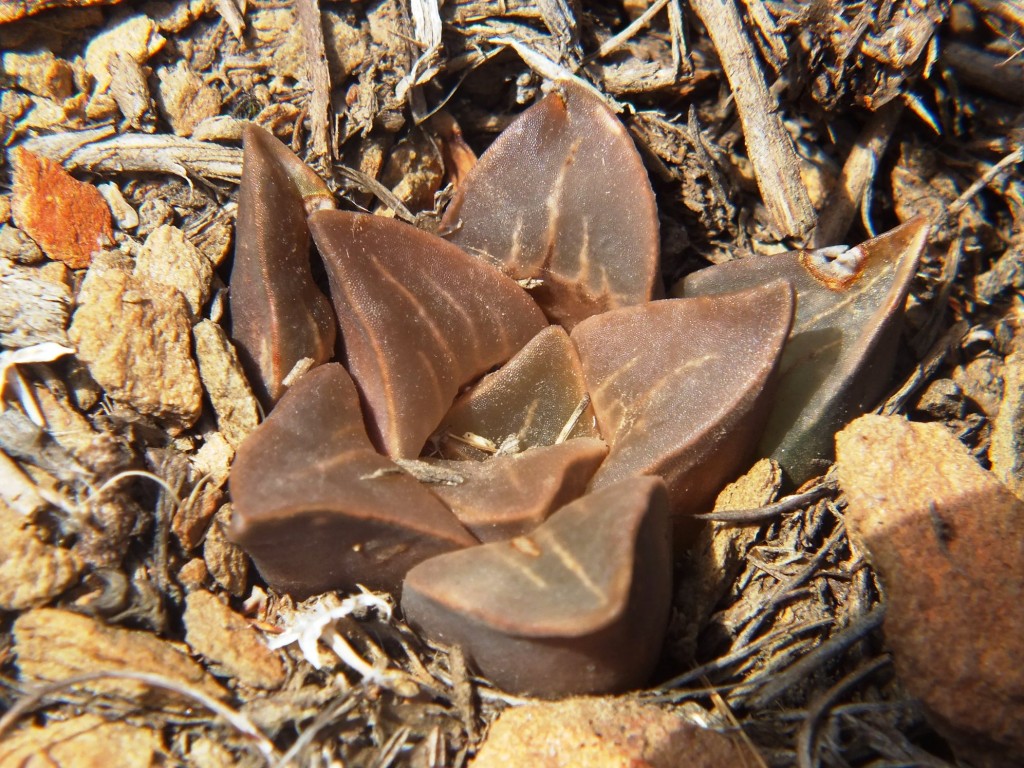

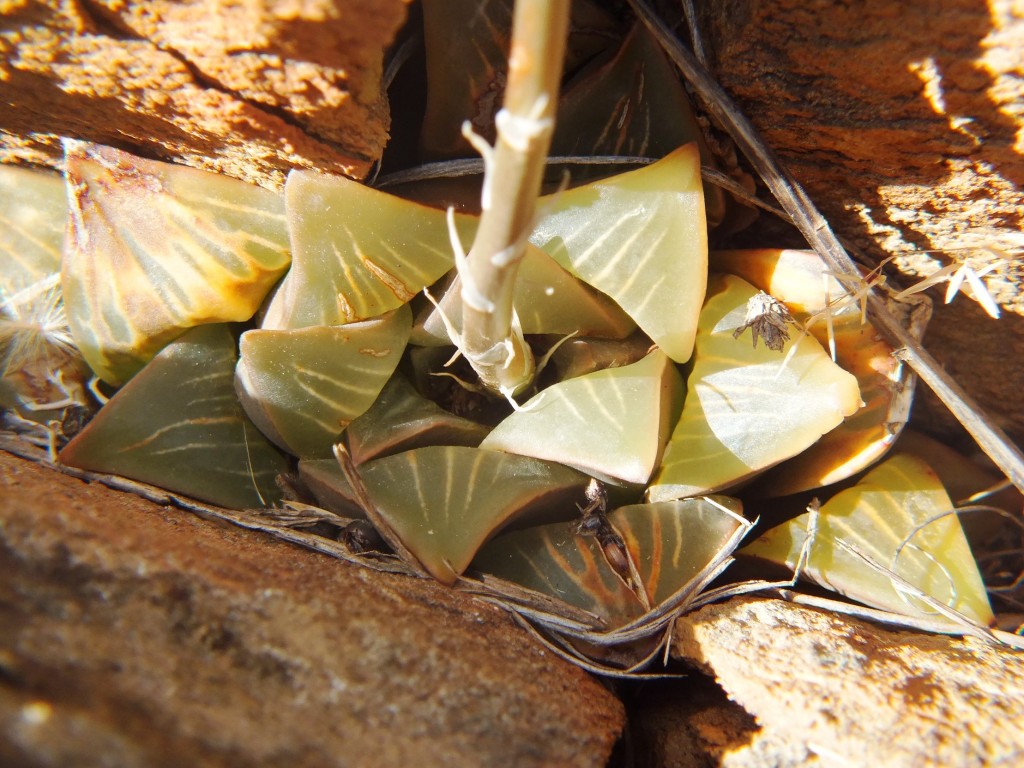
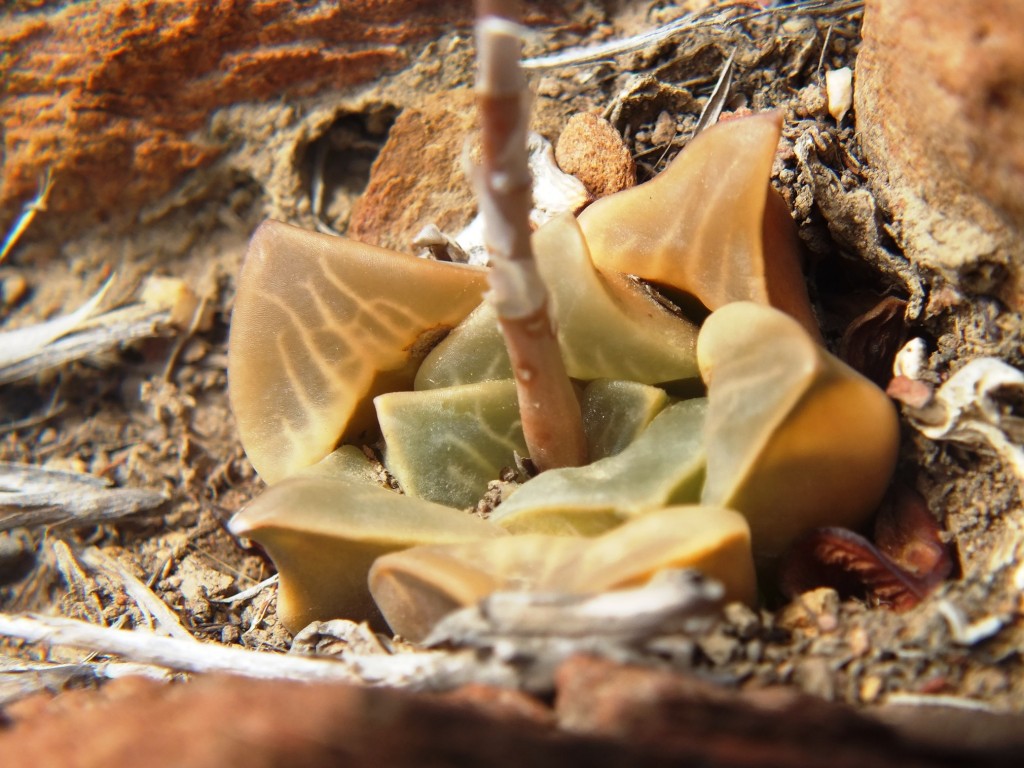
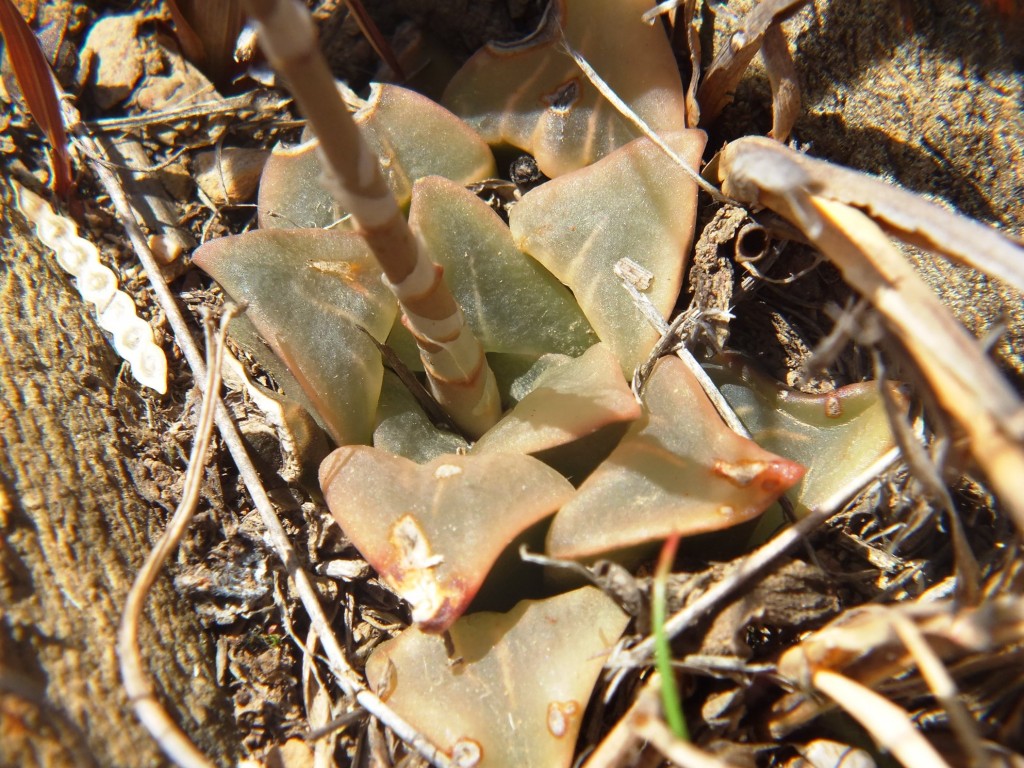

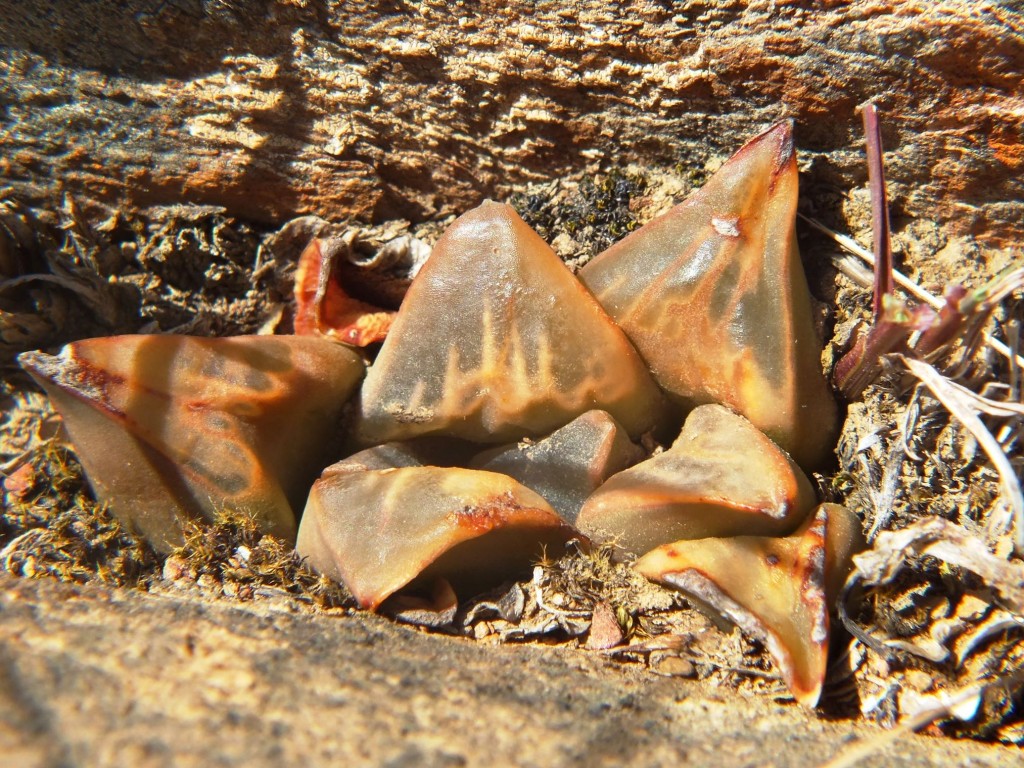
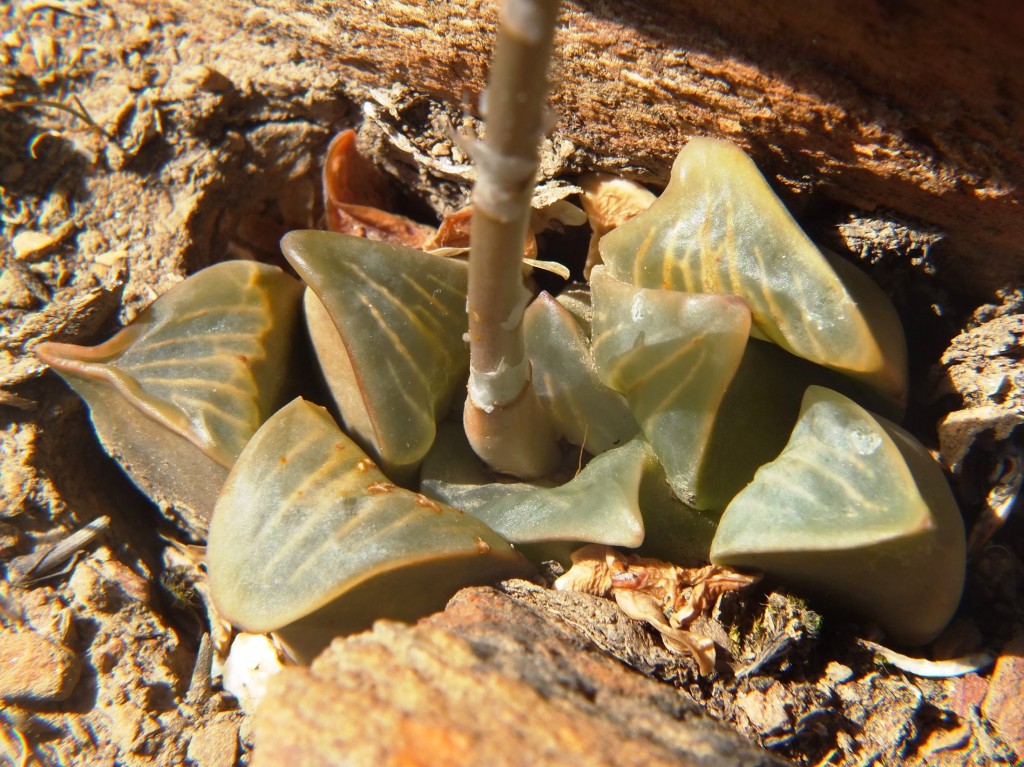
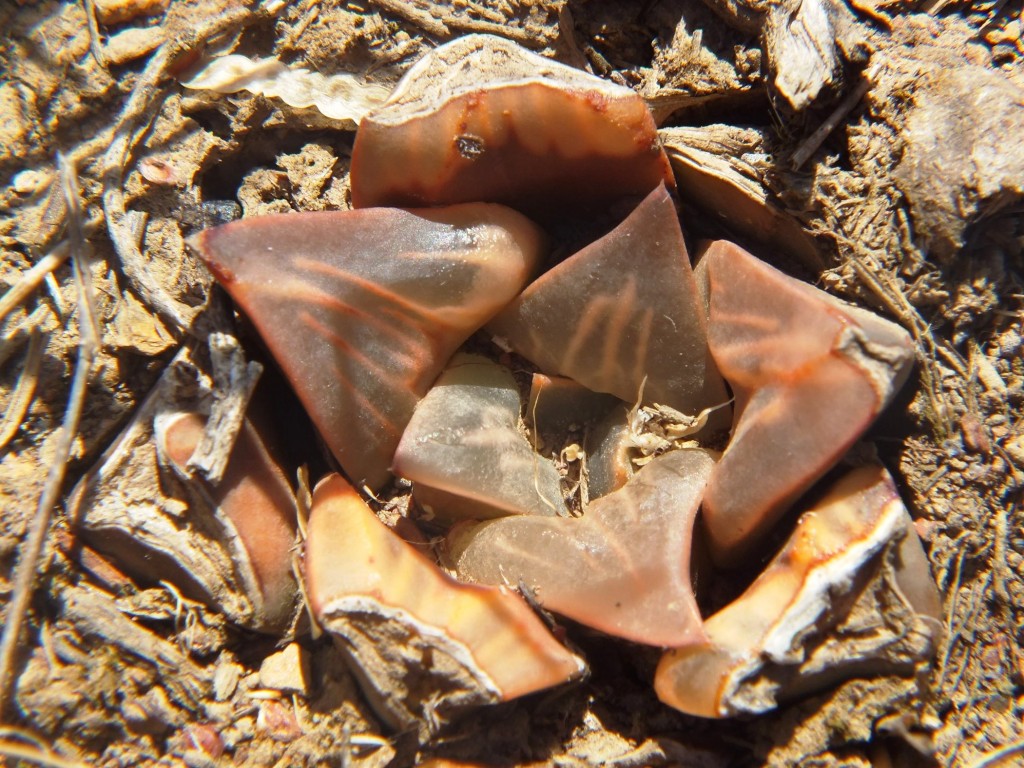
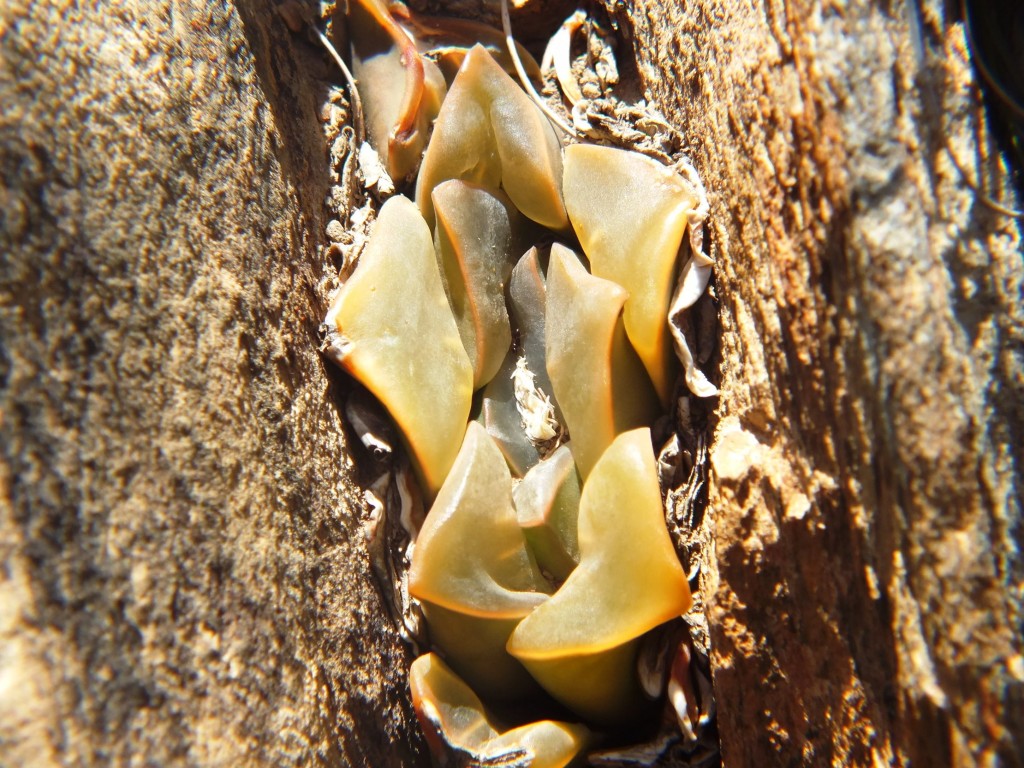
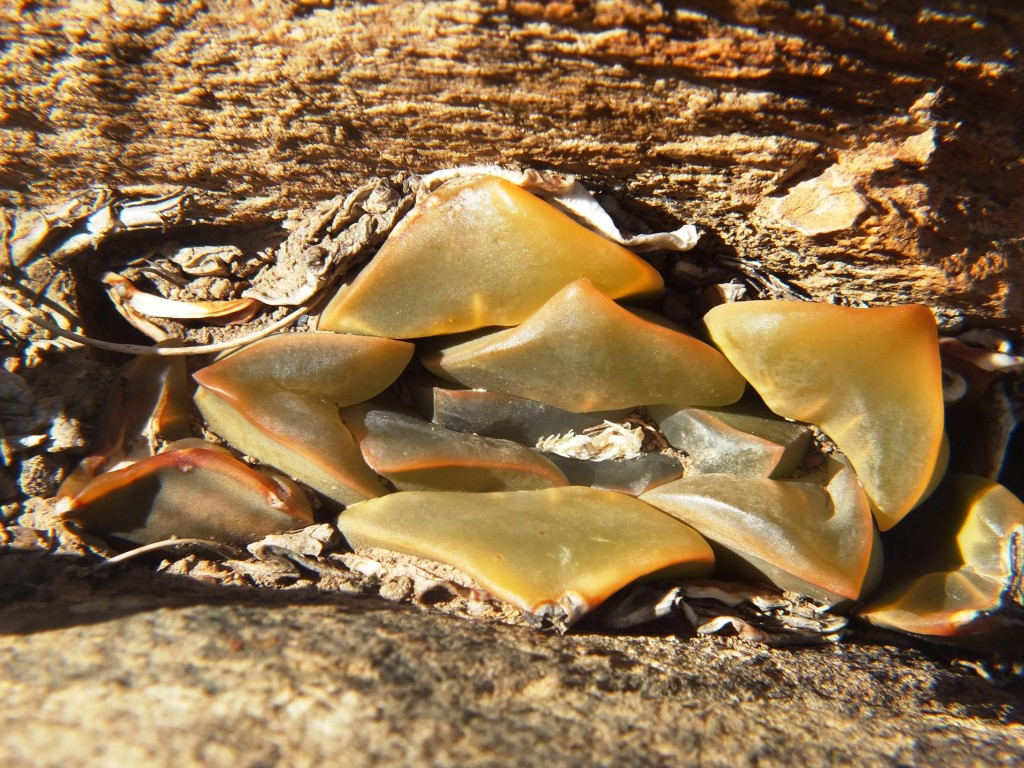
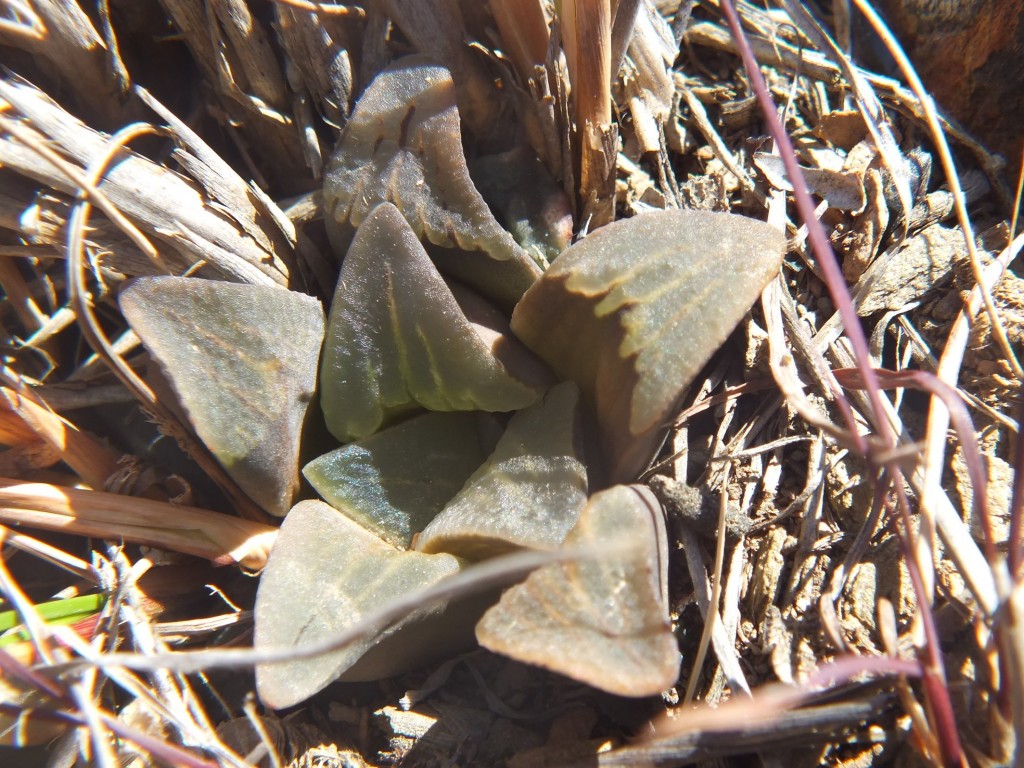
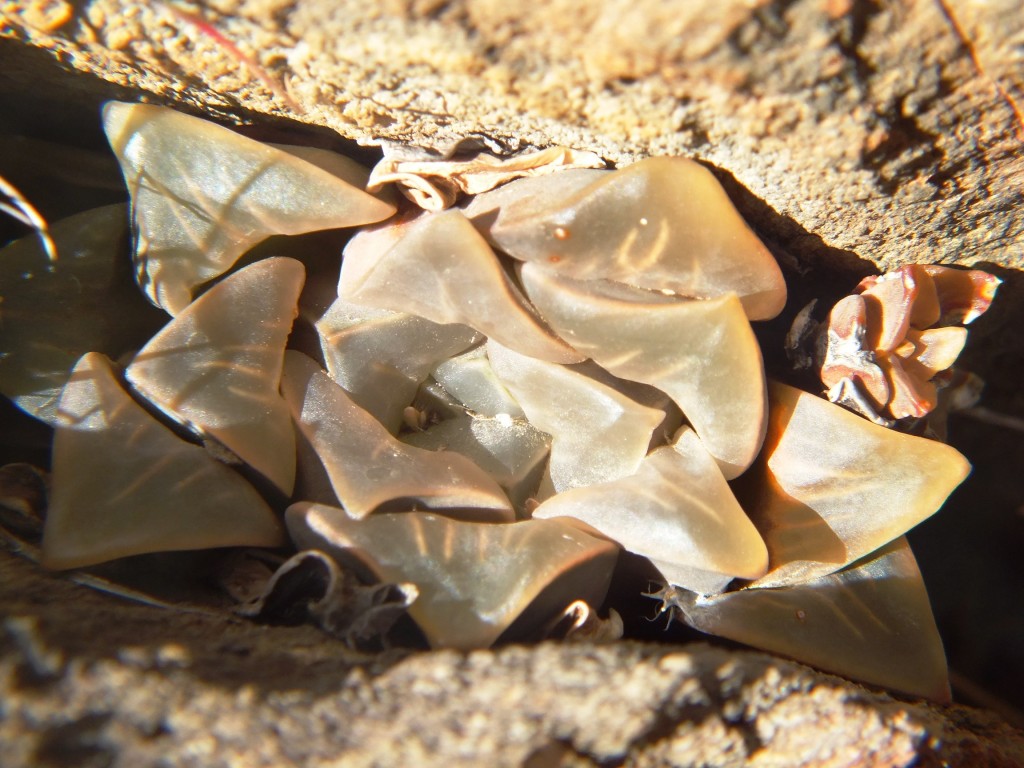

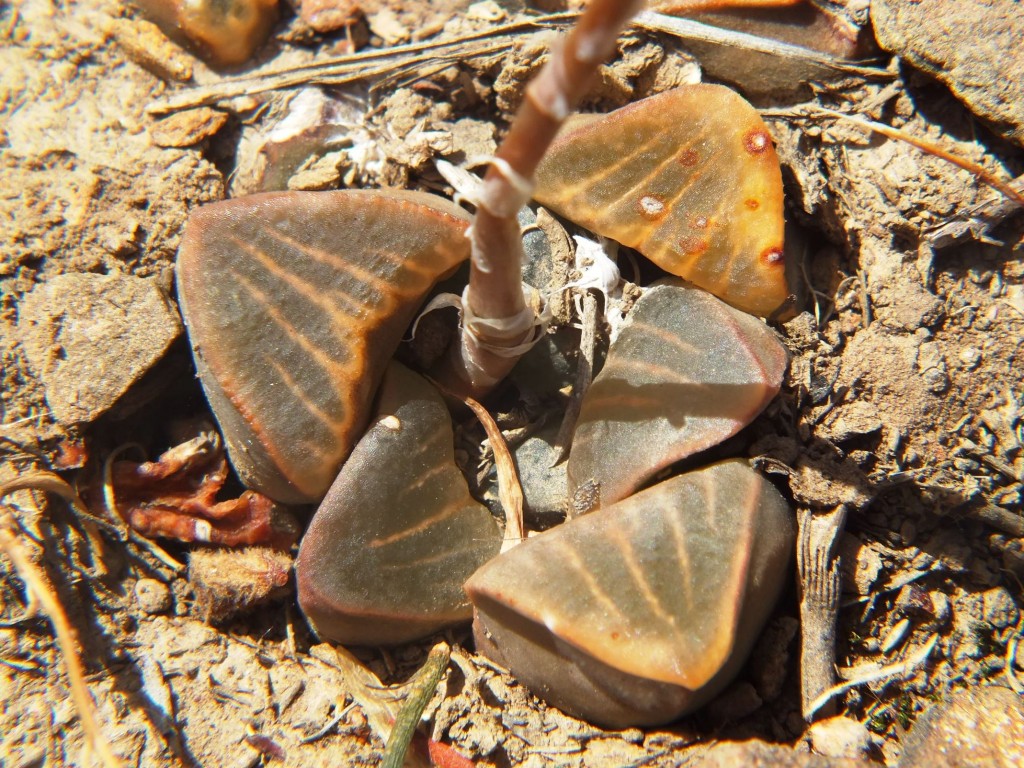

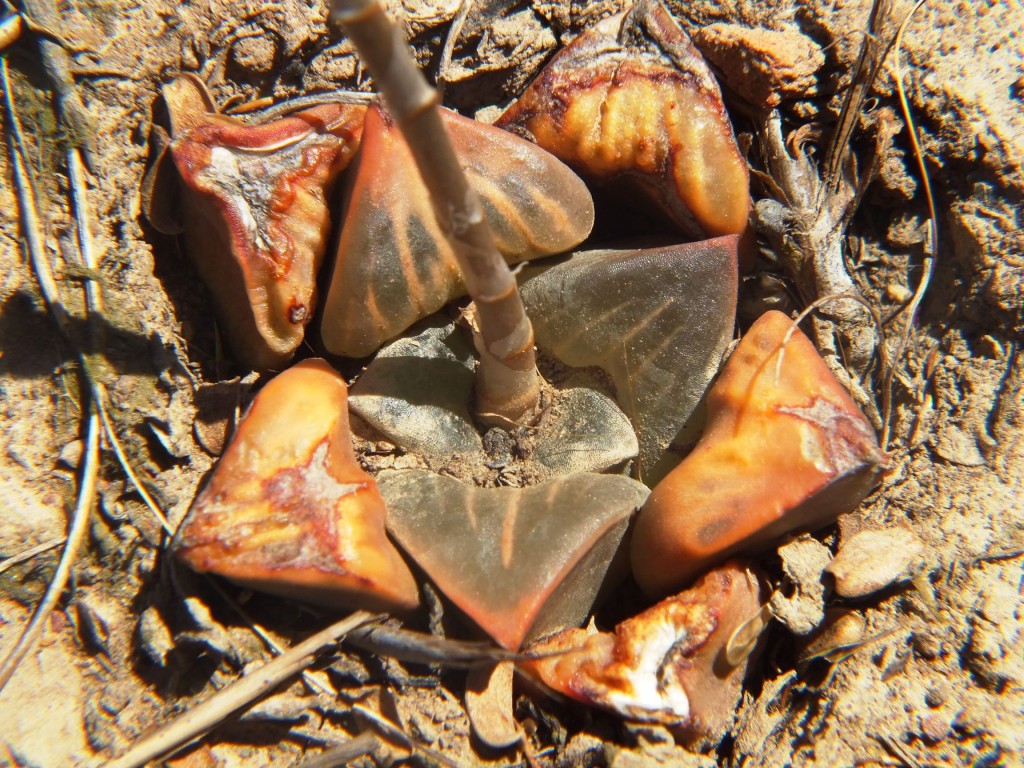
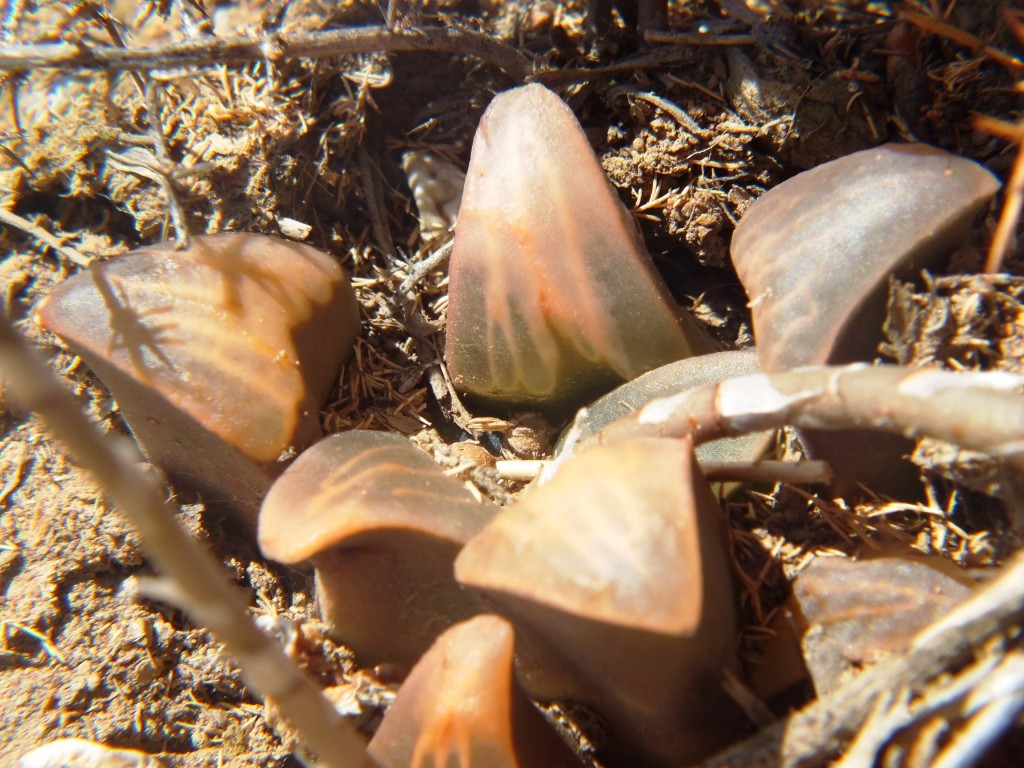
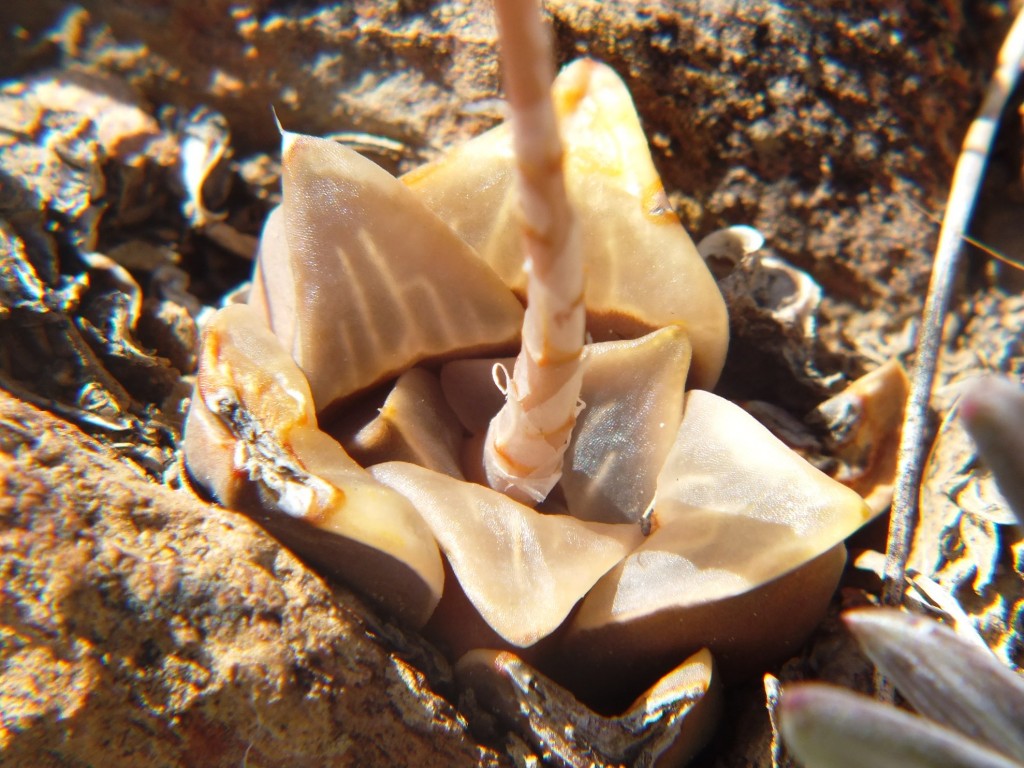


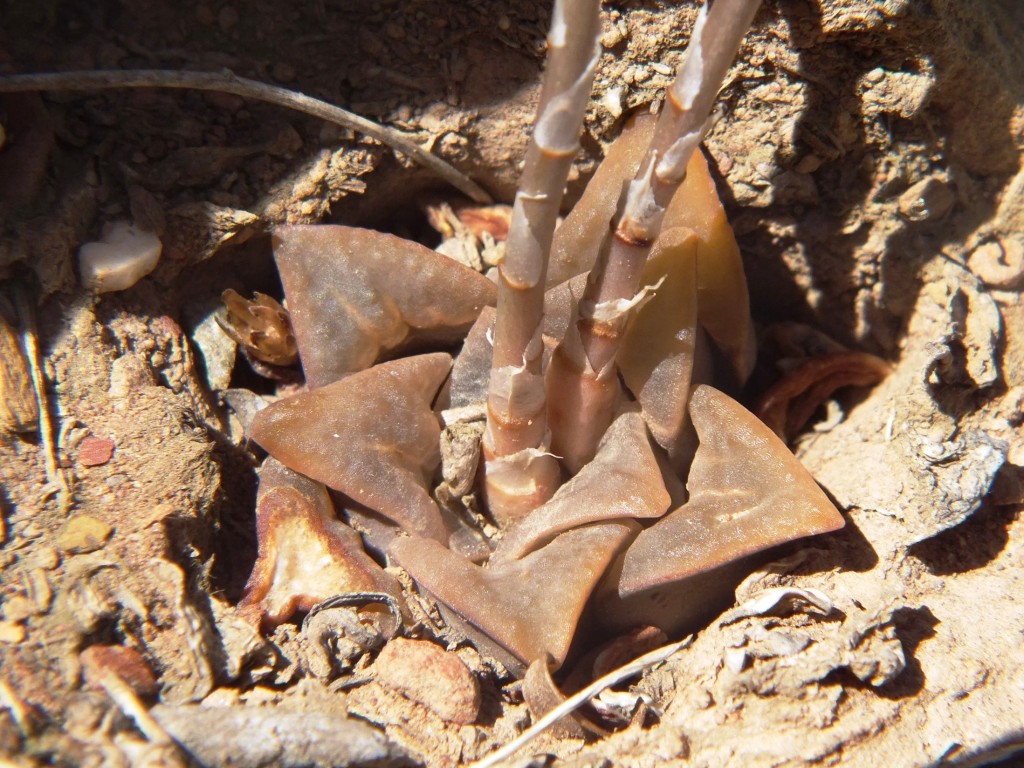
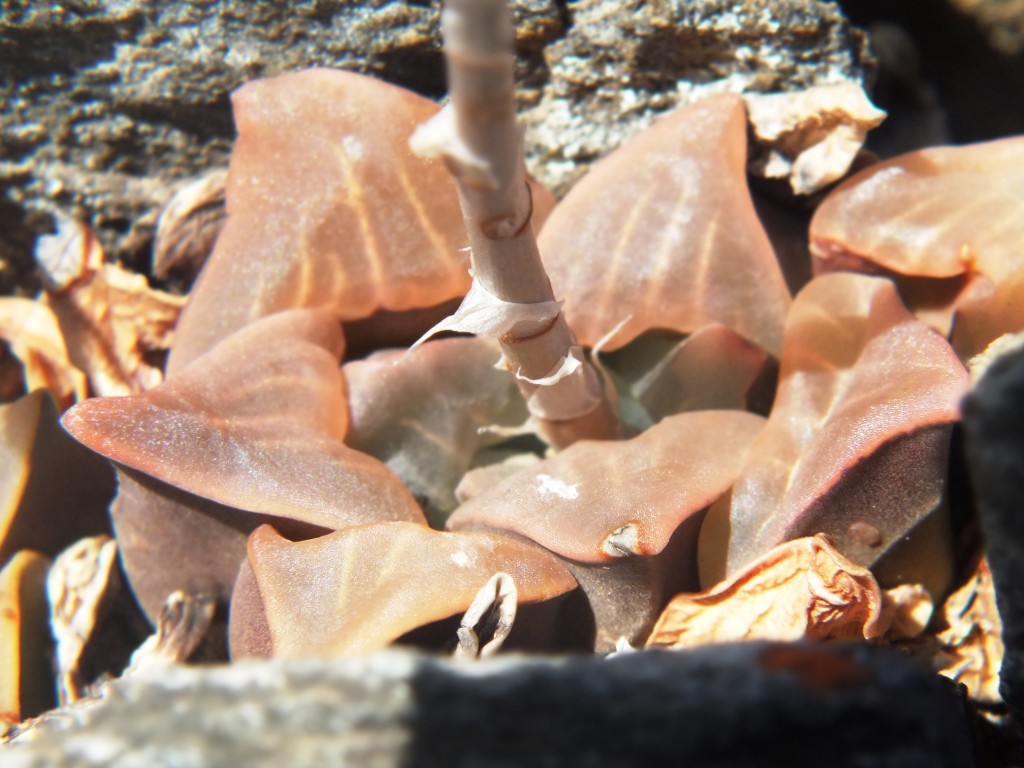
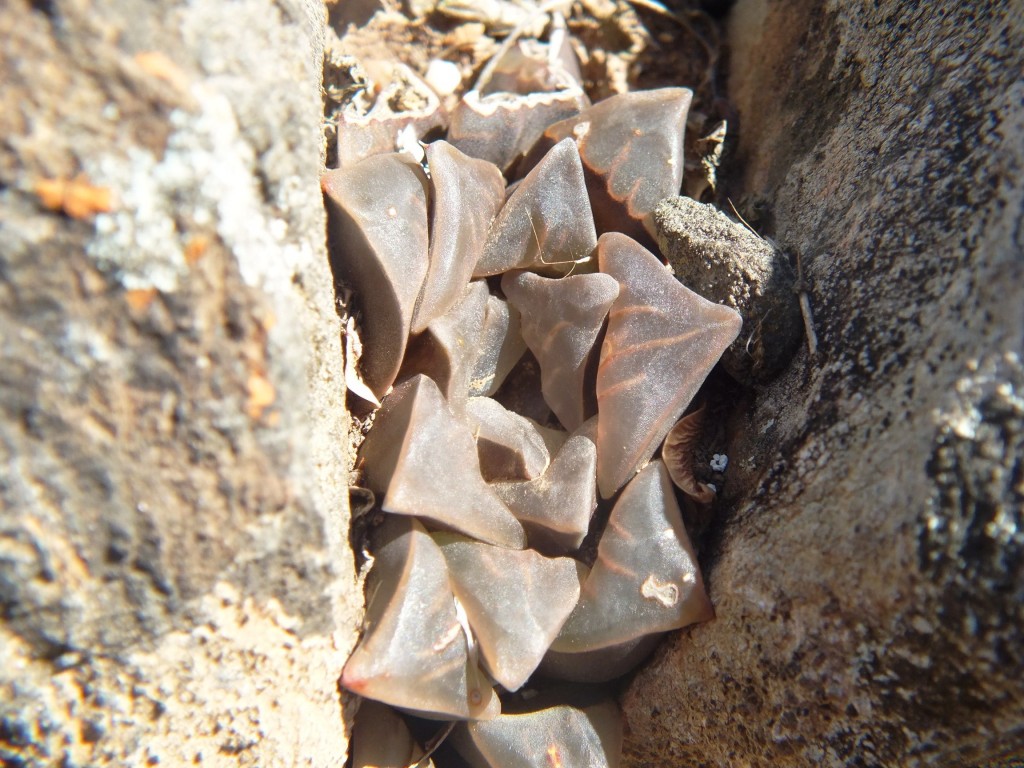

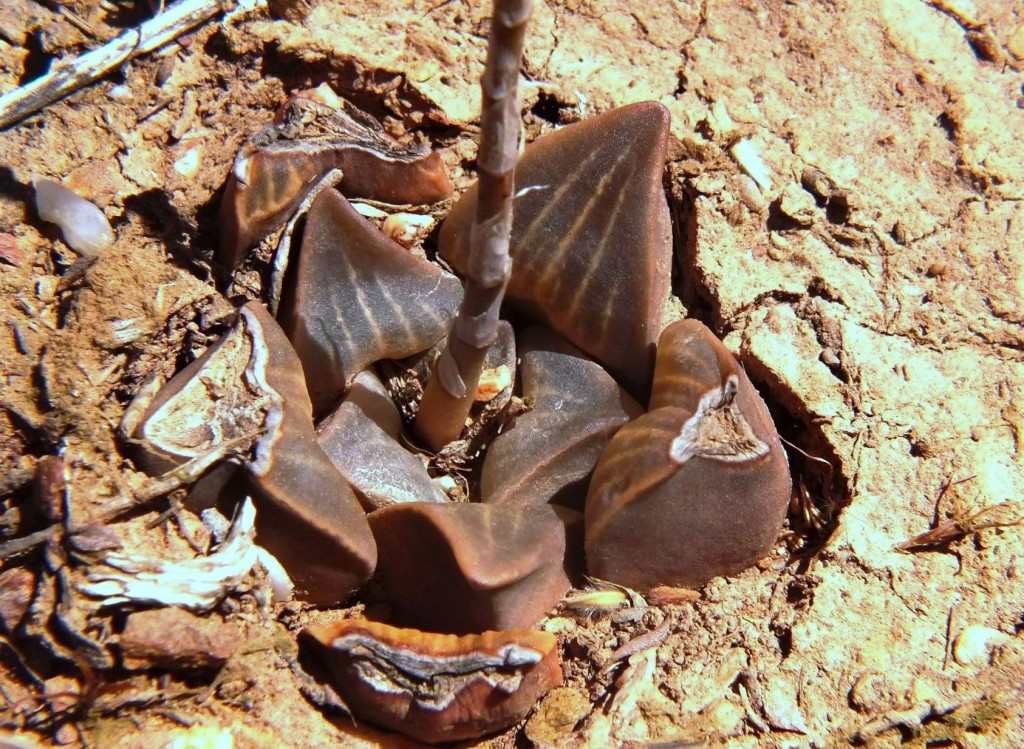
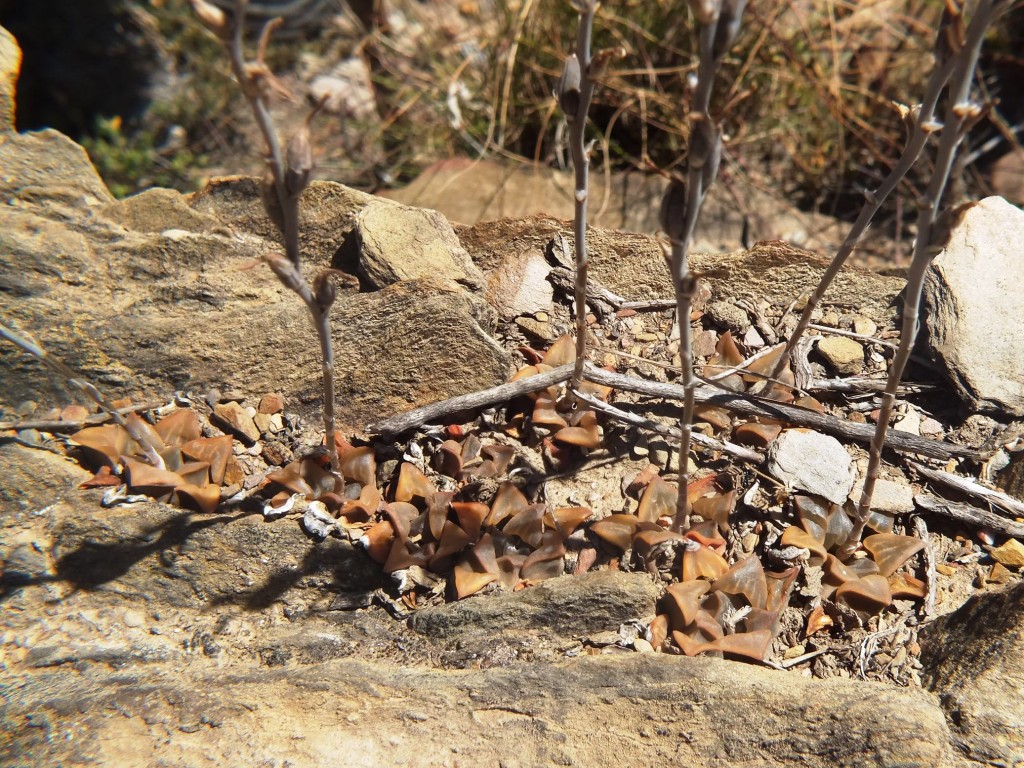
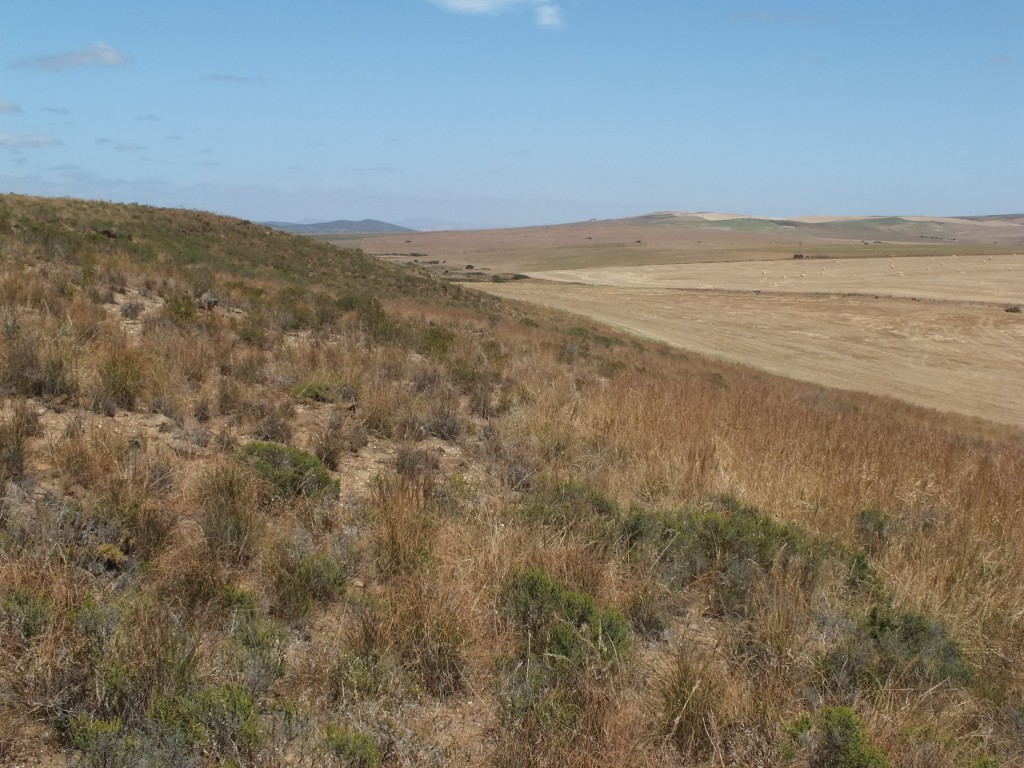
Fig. 44 7941 View west to Haarwegskloof 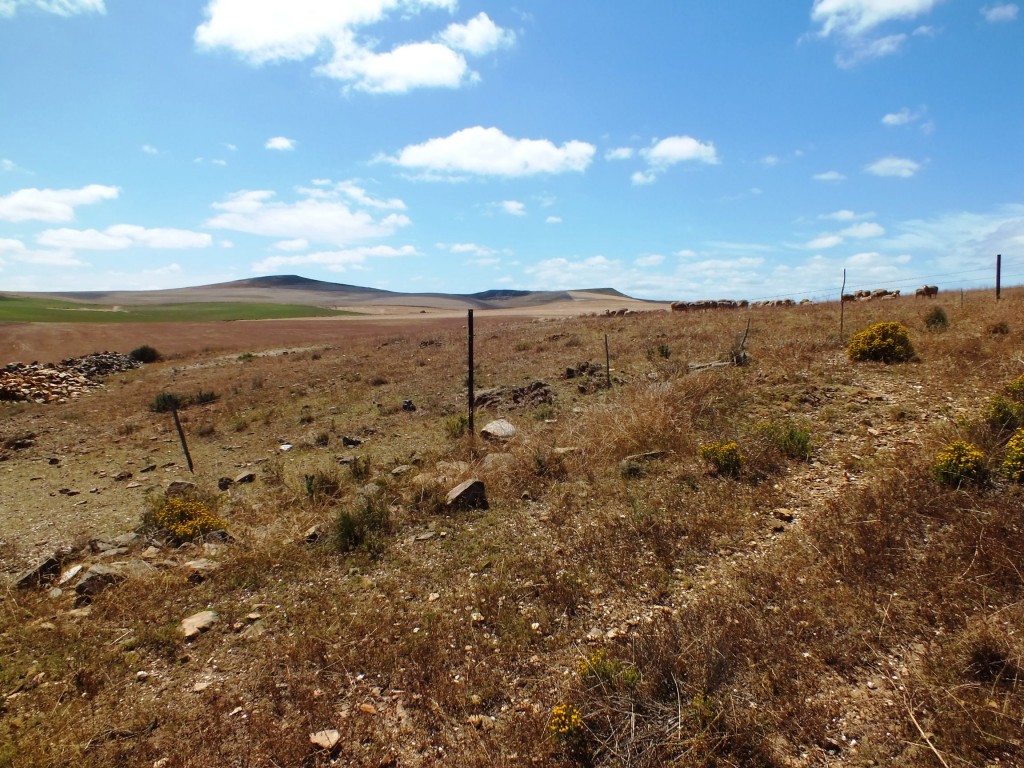
Fig. 45 7941 View east to Die Kop
Set 2. MBB7943 H. mutica E Klipbankskloof. (figs 46-54)
I saw plants and photographed one (MBB7246) south of Klipbankskloof in a valley mapped as Verbrandskloof. There is another farm, also named Klipbankskloof further west where Jakub Jelimicky recorded H. mutica too. I wanted to see that locality and registered the two Klipbankskloof places as the same. Not so. So I intended up exploring further east where we first found this in a west facing ridge. There was no sign of fruits or flower.
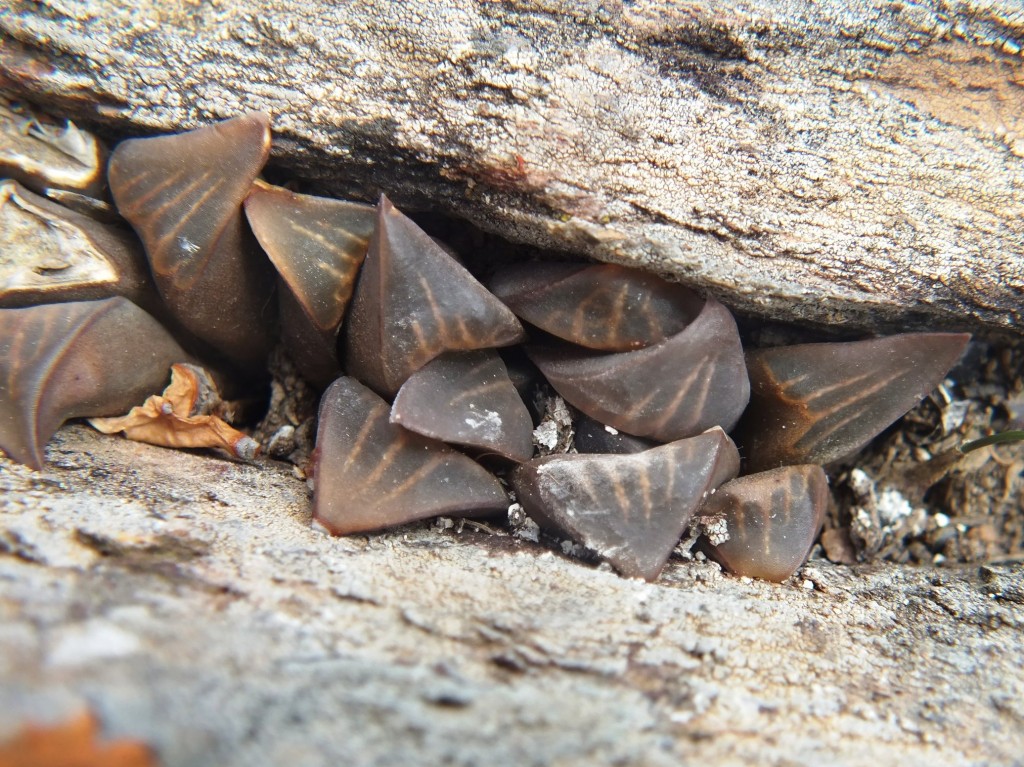
Fig. 46 7943 E Klipbankskloof 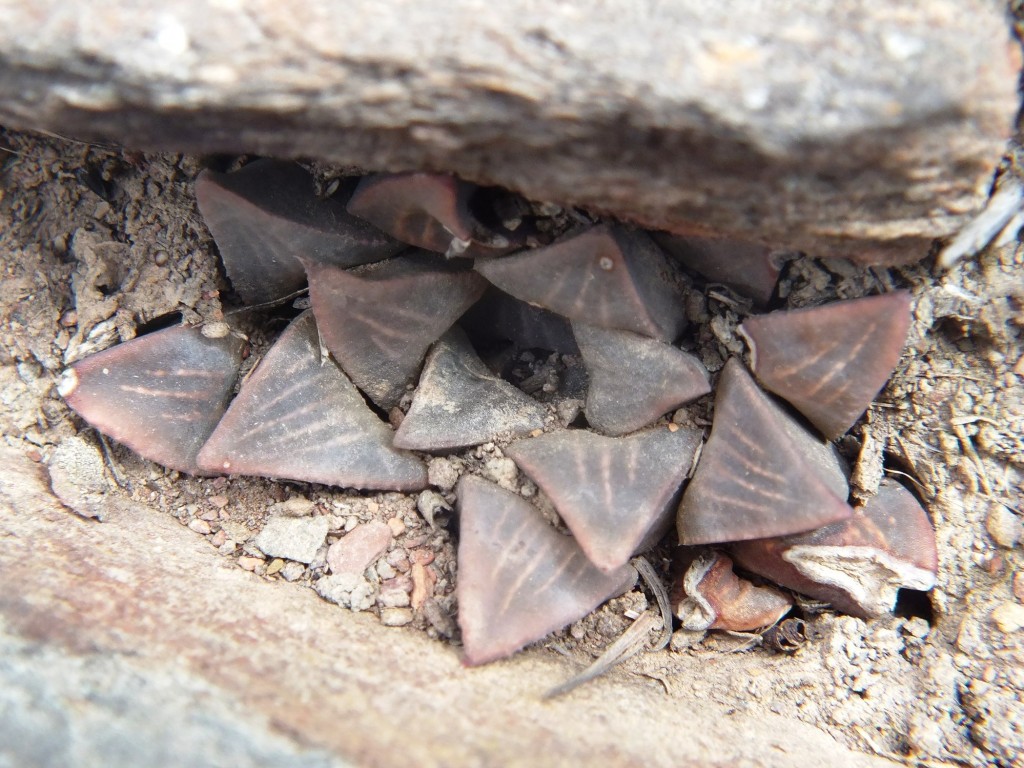

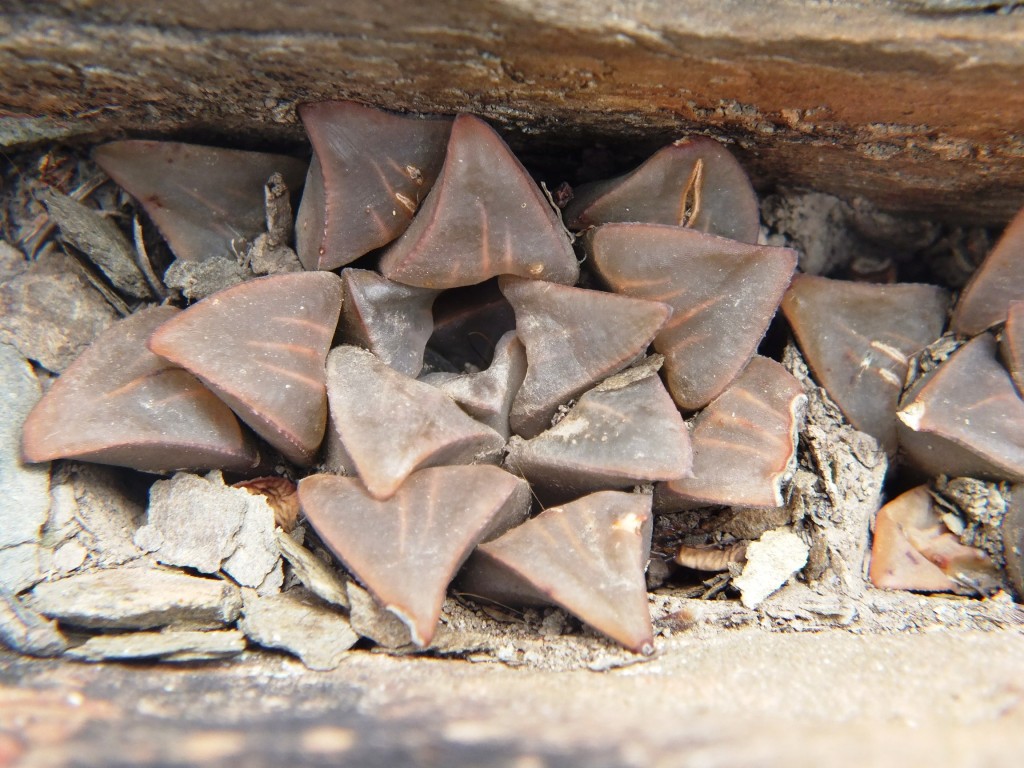

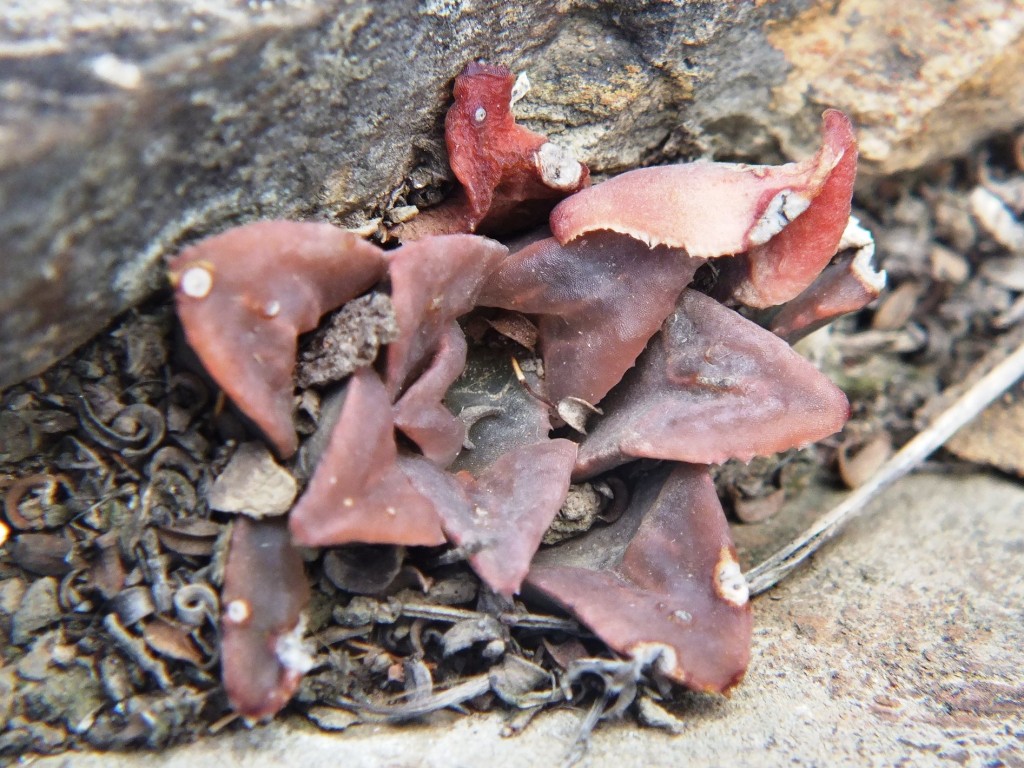

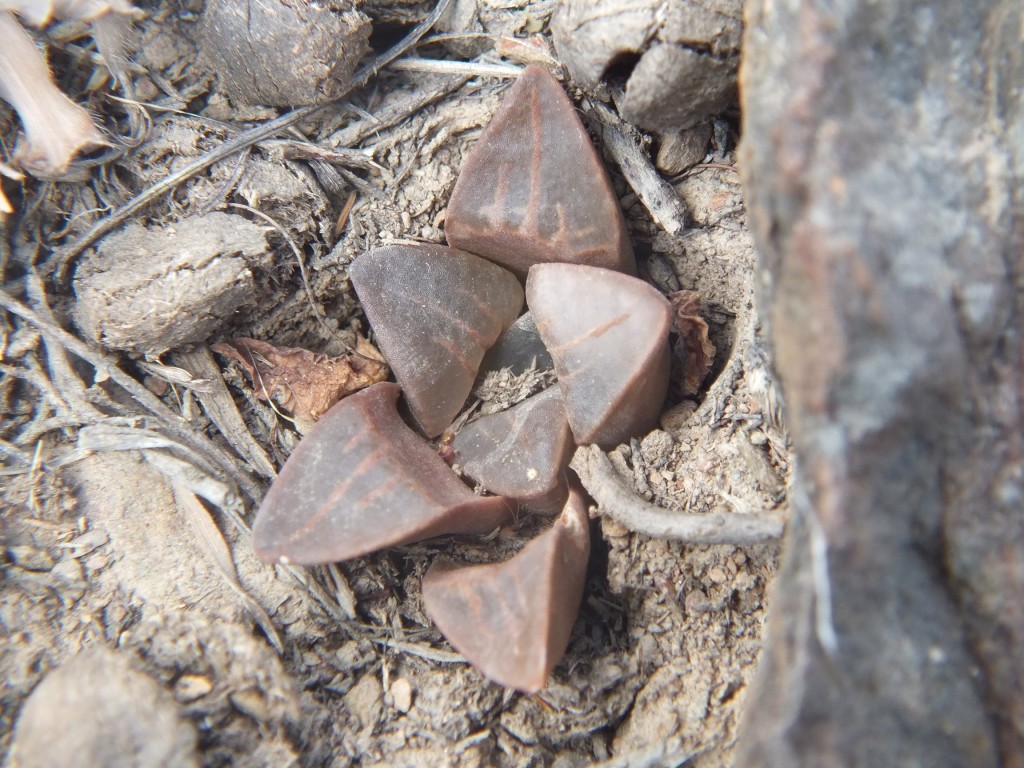
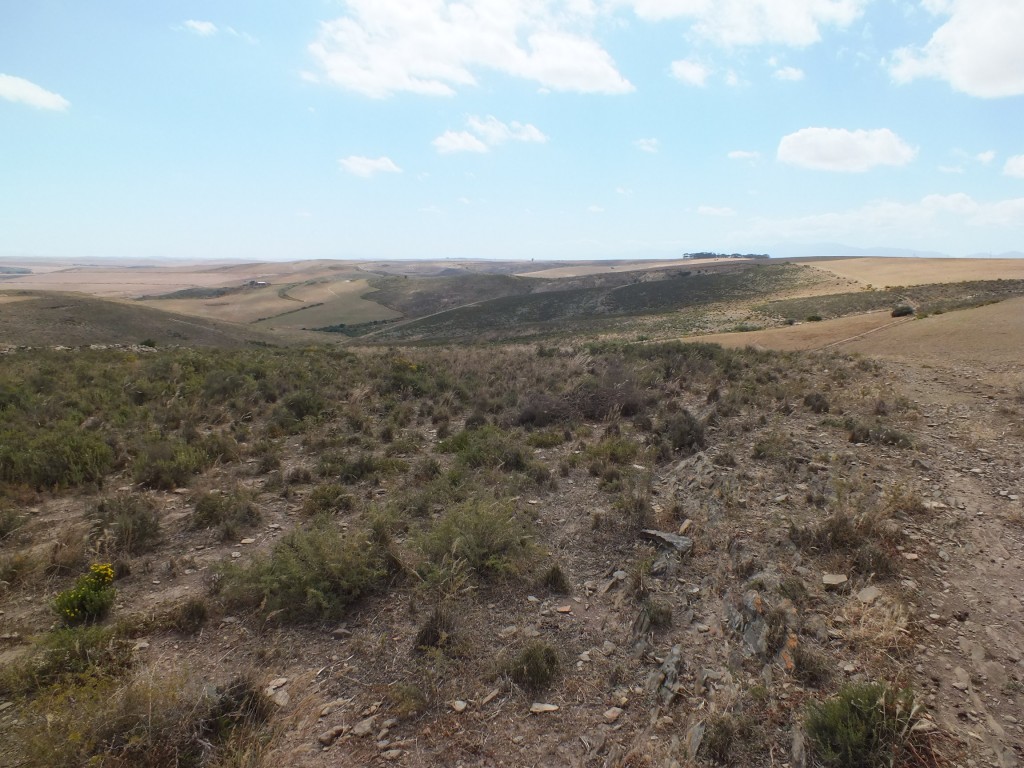
Fig. 54 7943 View west to farmhouse
Set 3. MBB7945 H. mutica SE Klipbankskloof. (figs 55-80)
This was on a north facing slope and at first we were a bit taken aback because the plants we first observed had flowered poorly or some time previously. But that changed as from north facing slope we entered a very minor valley with both northeast and northwest aspects (more to follow). Here there were many plants and all just finishing flowering. There were some outstanding, dramatic plants. I wish I was a more accomplished and better equipped photographer. Some of the images would have been stunning.
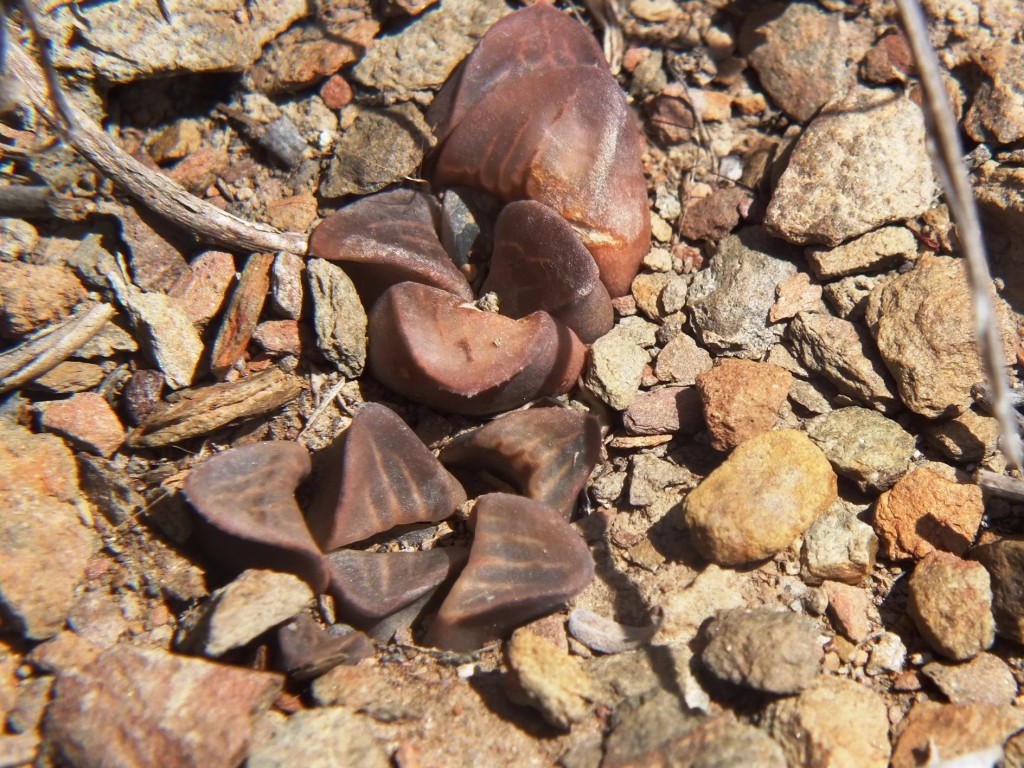
Fig. 55 7945 SE Klipbankskloof 
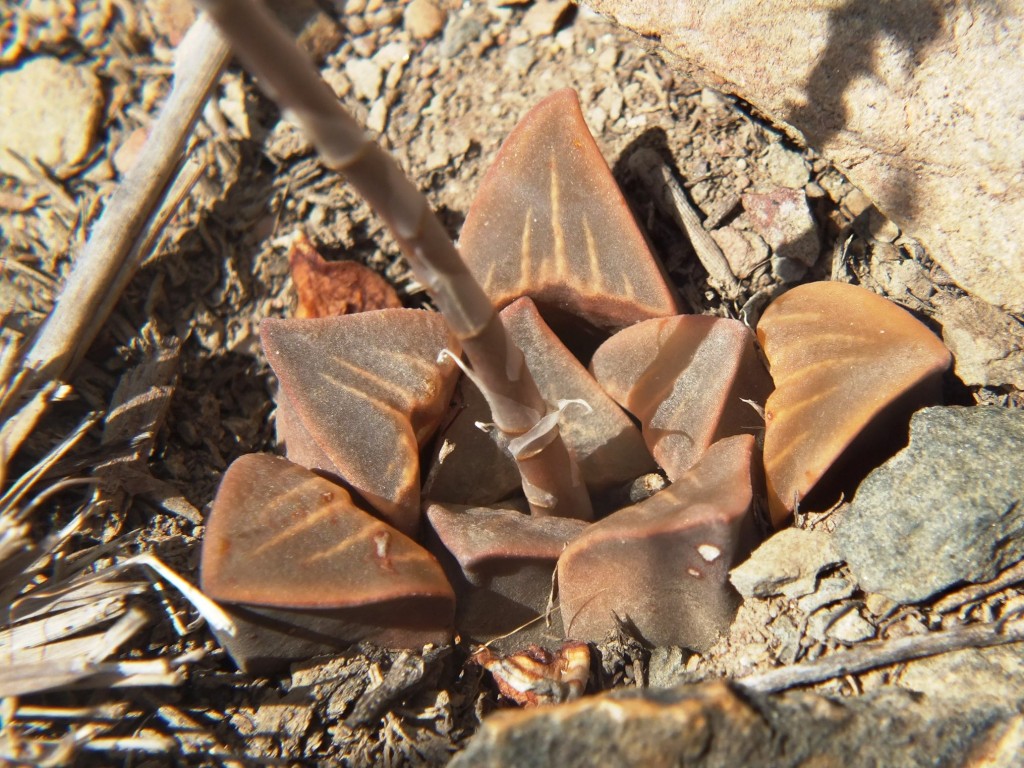
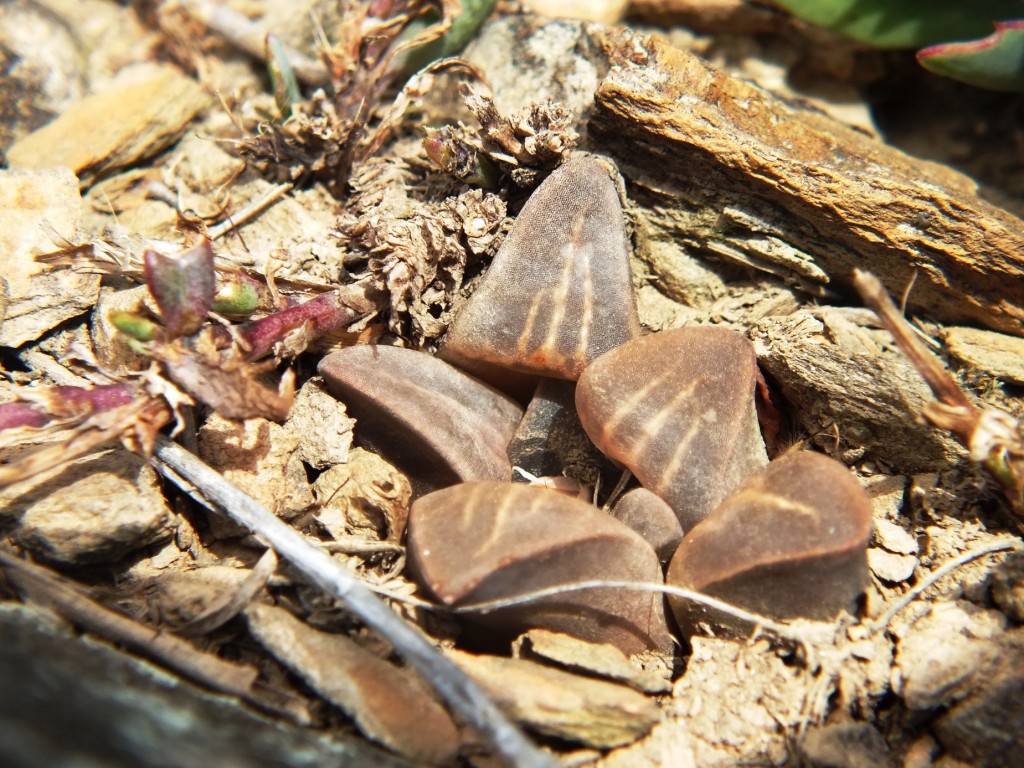

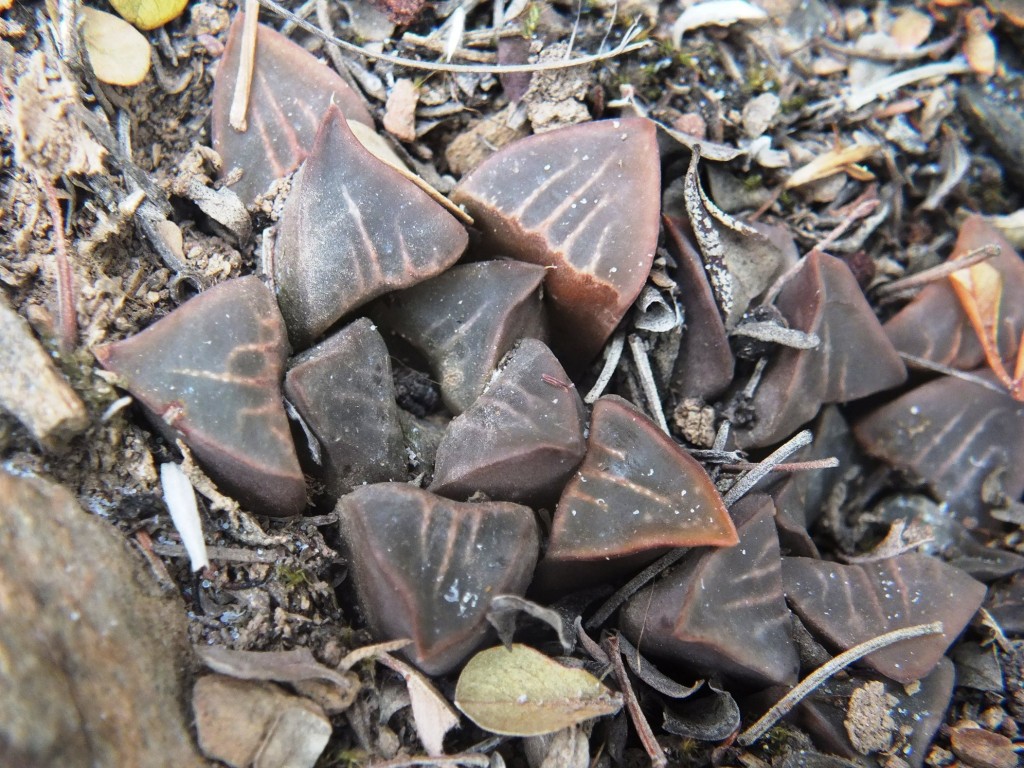
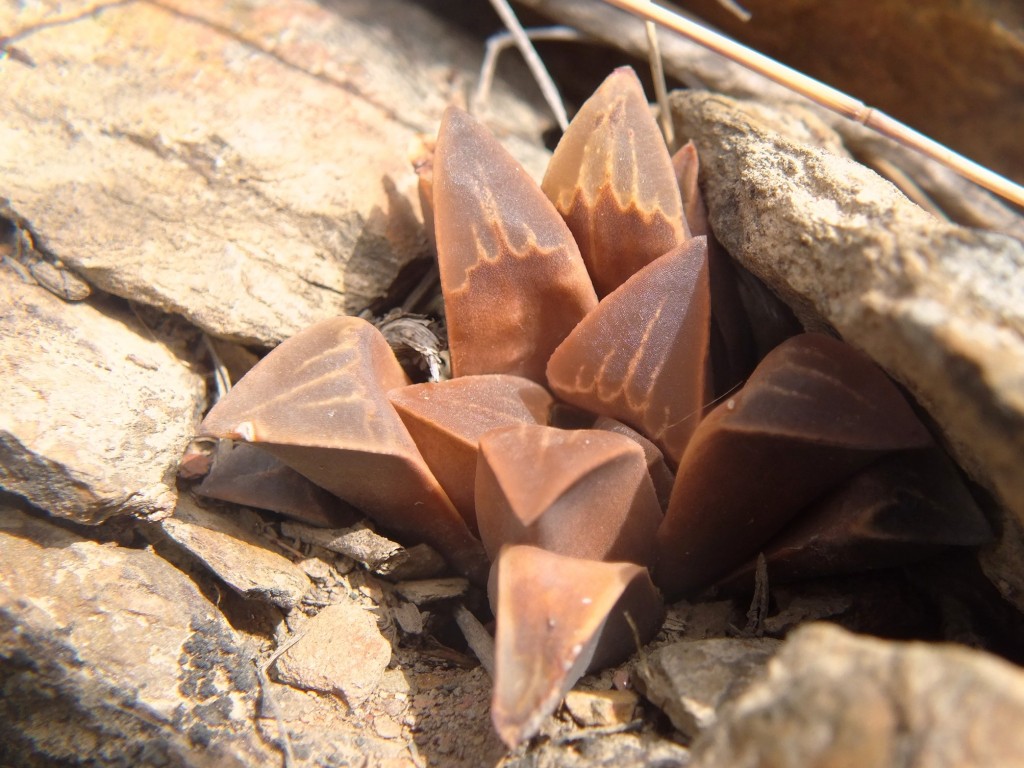
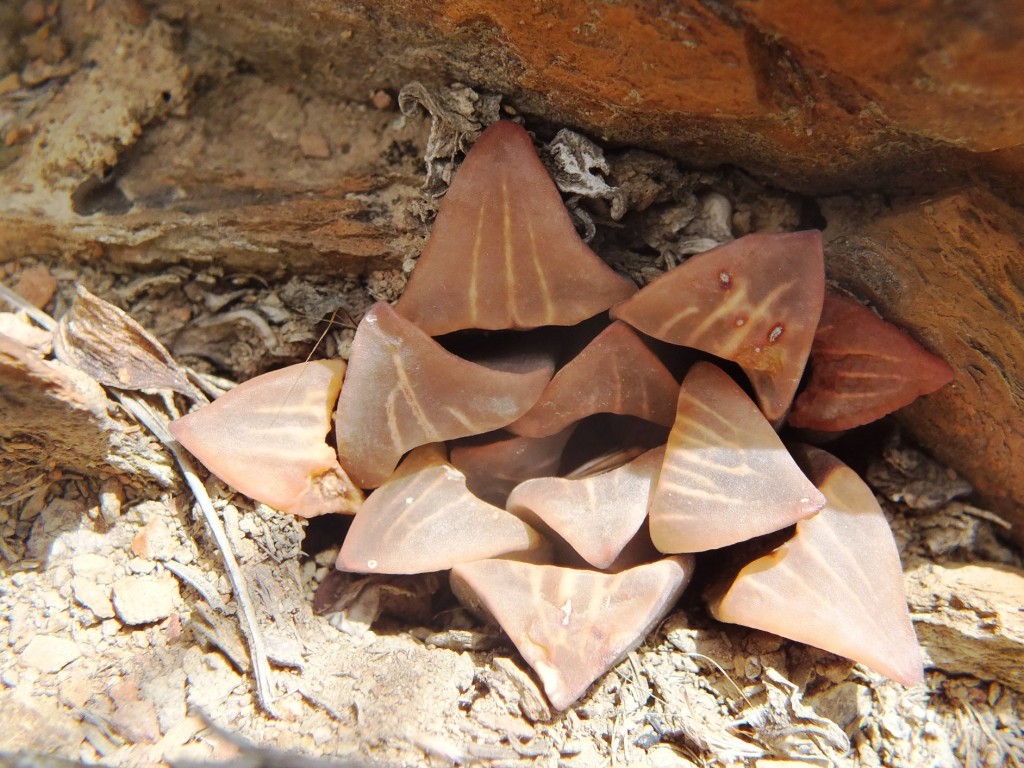
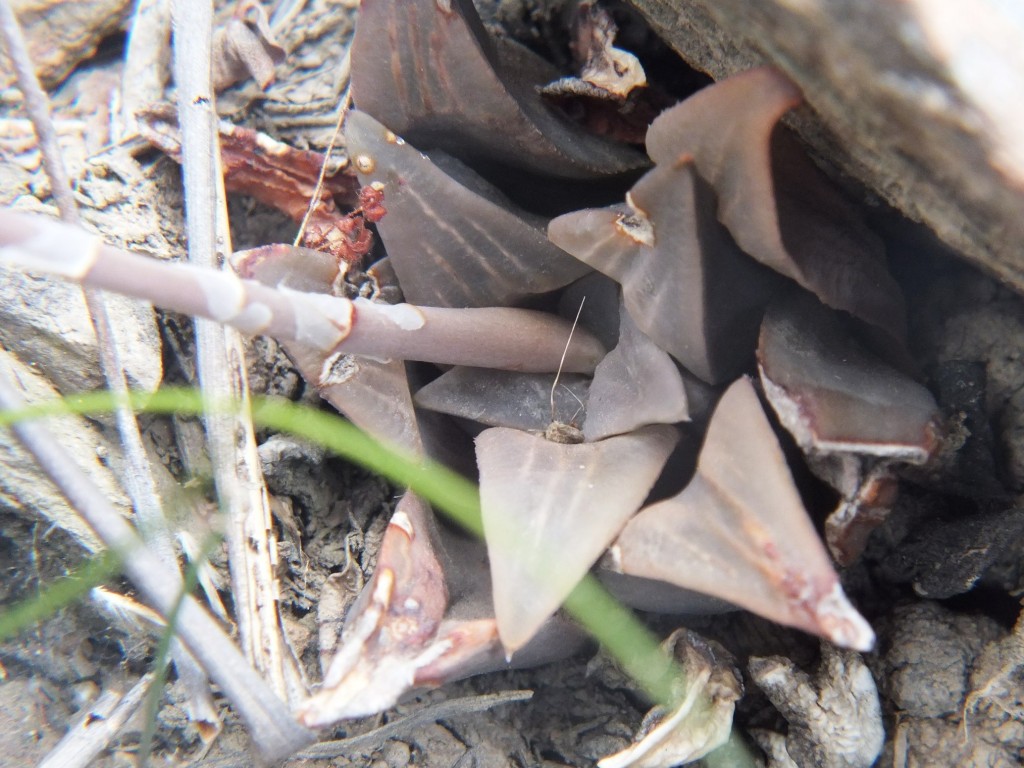
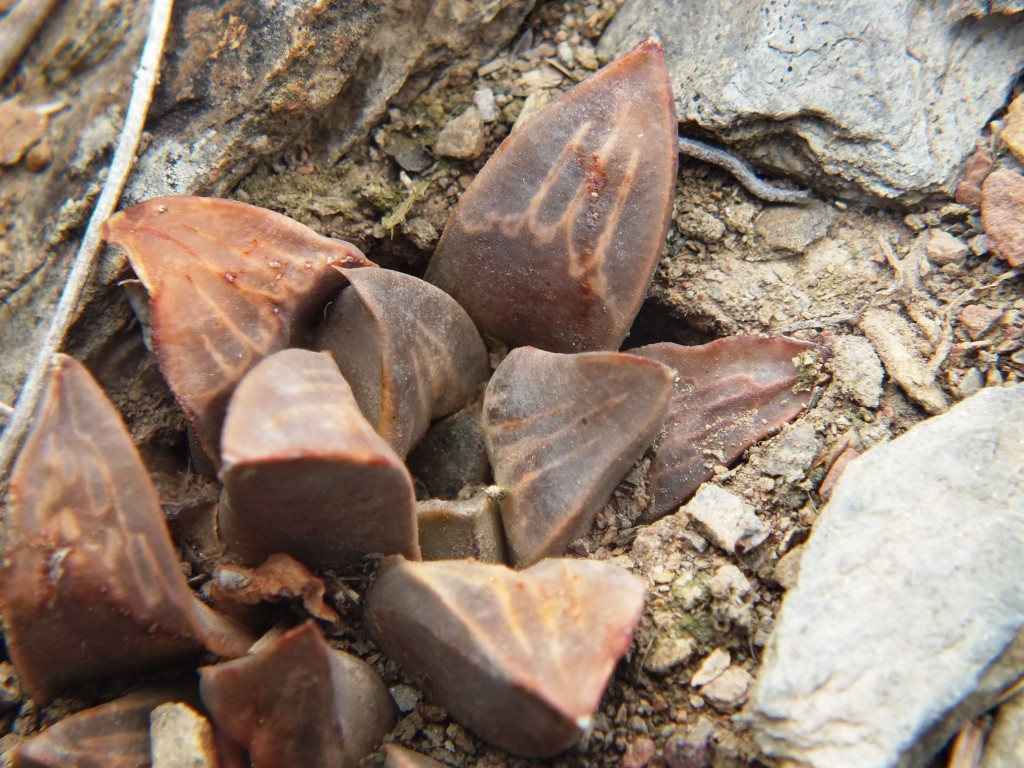
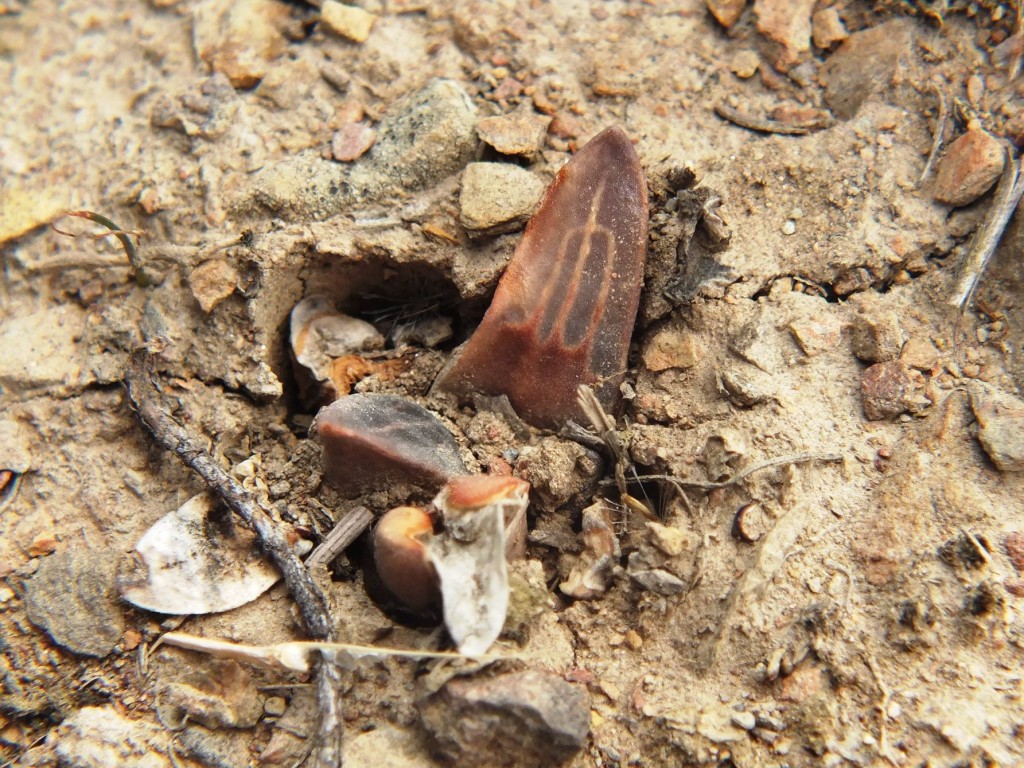
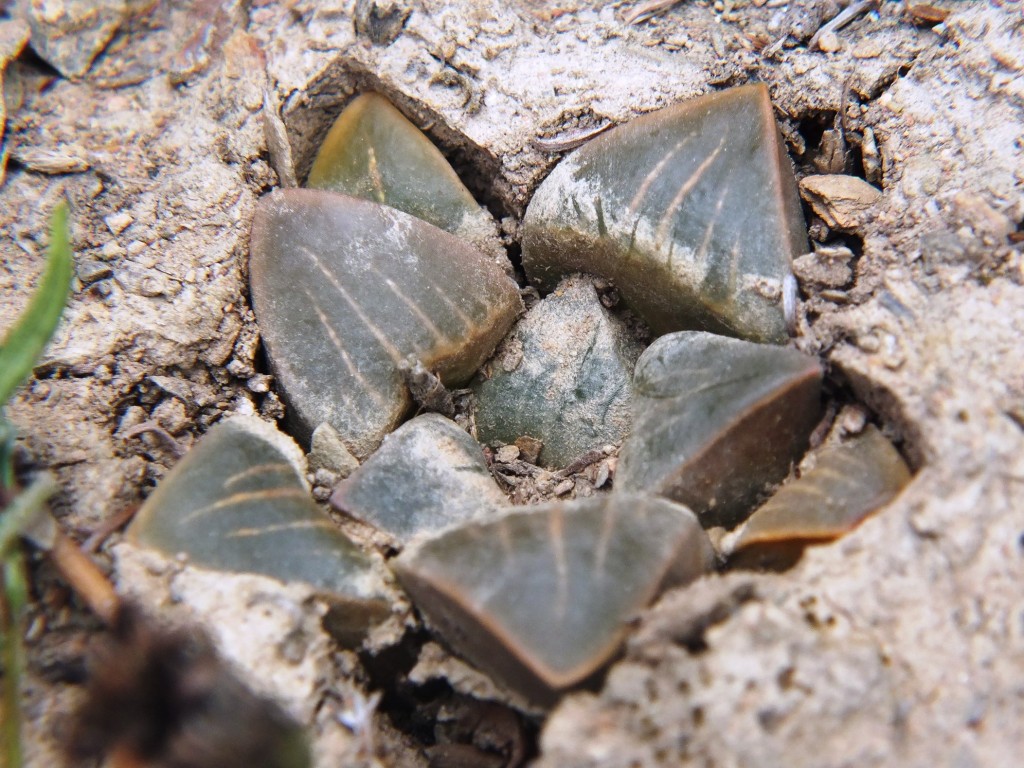
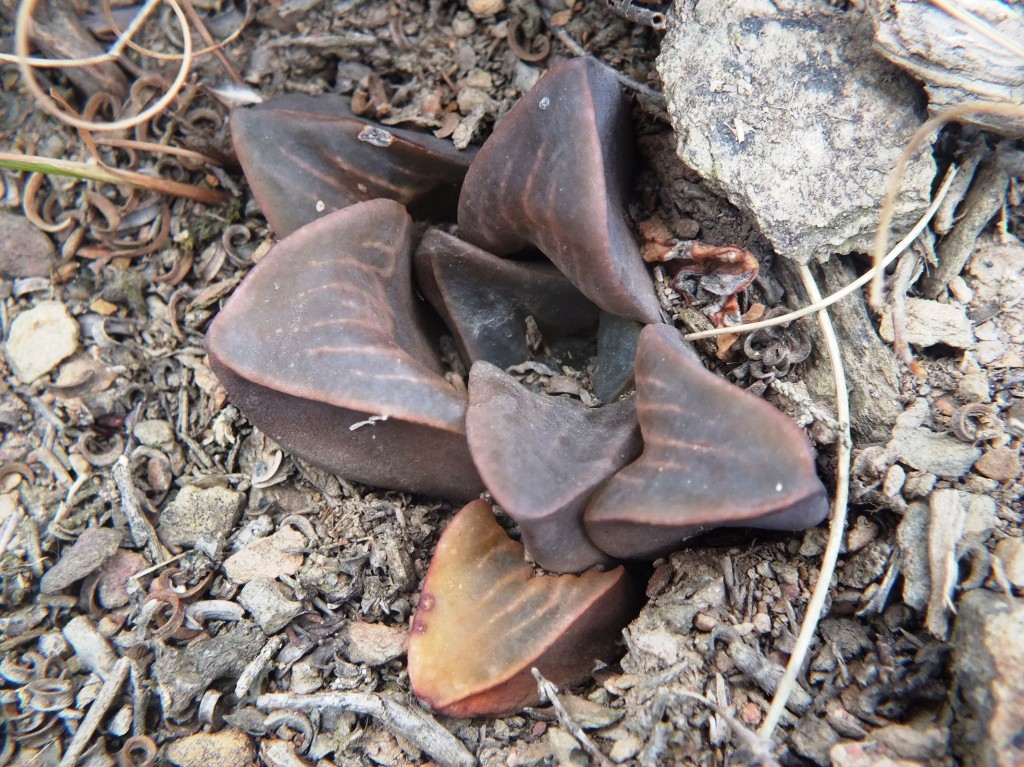
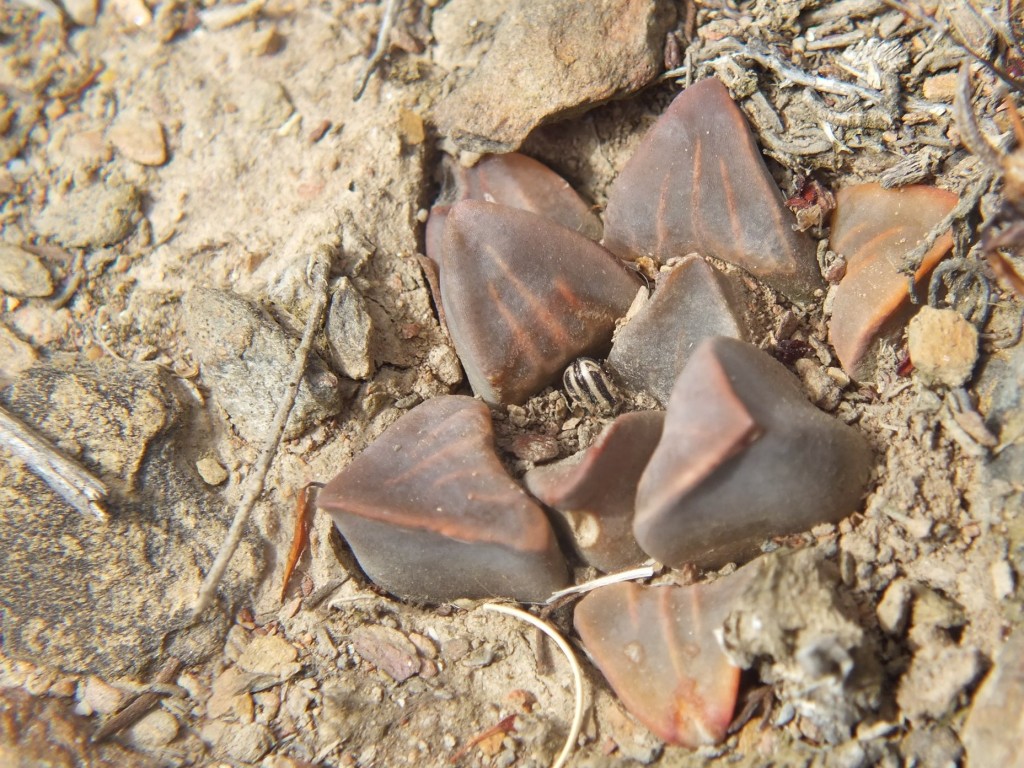
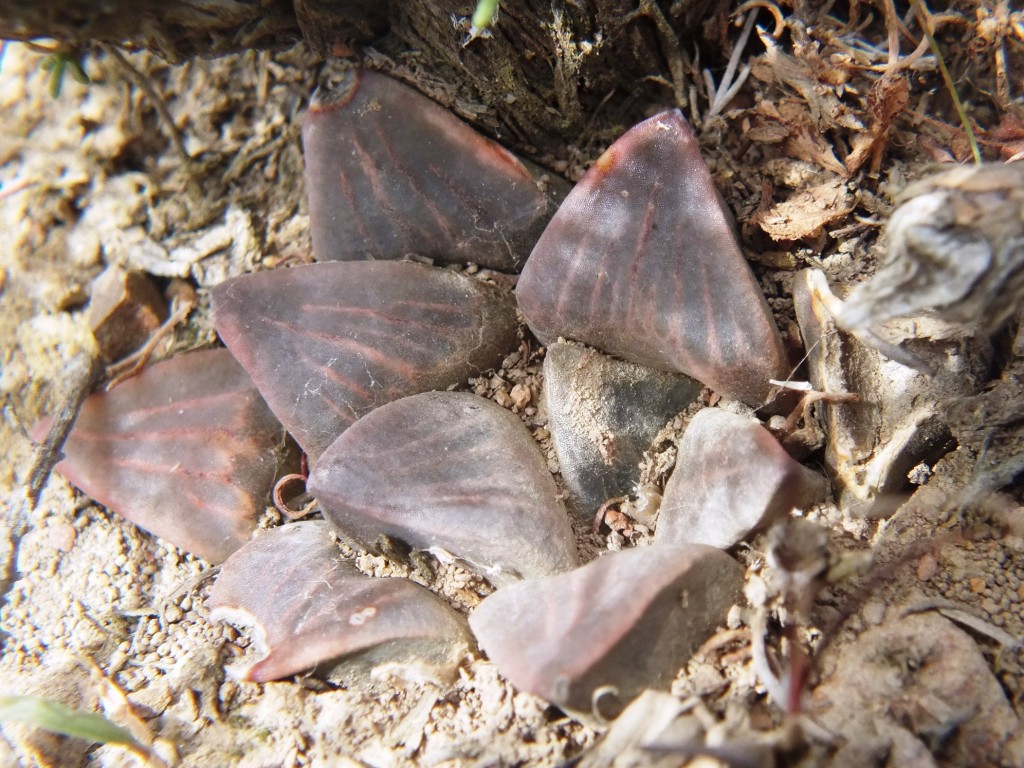
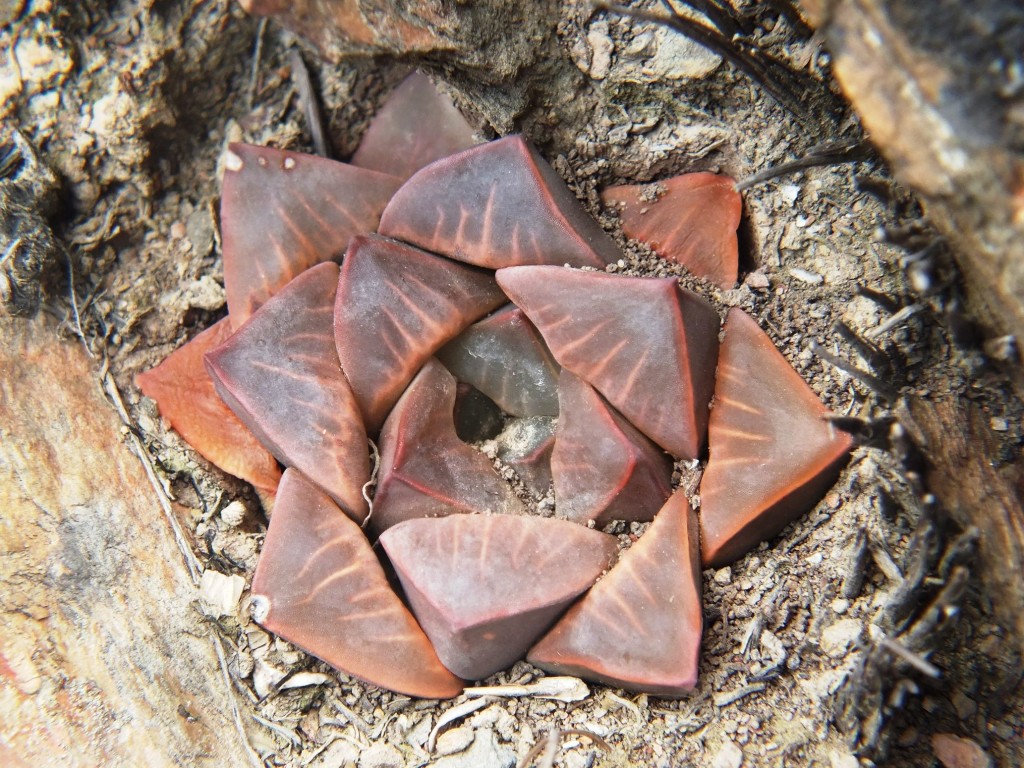
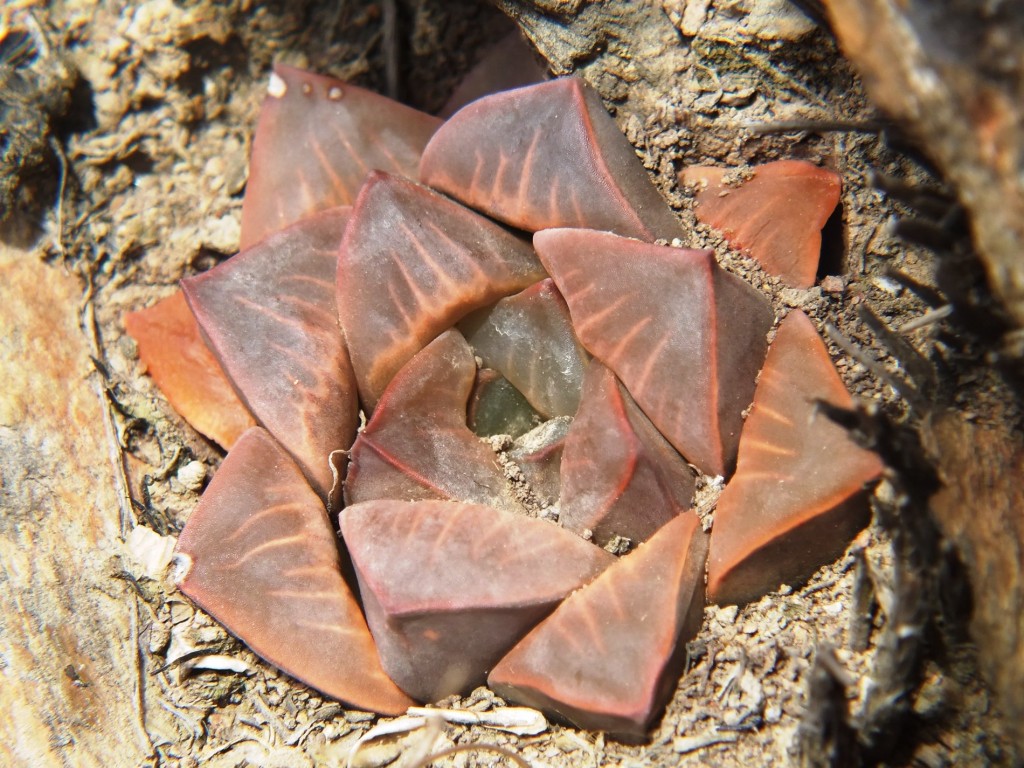

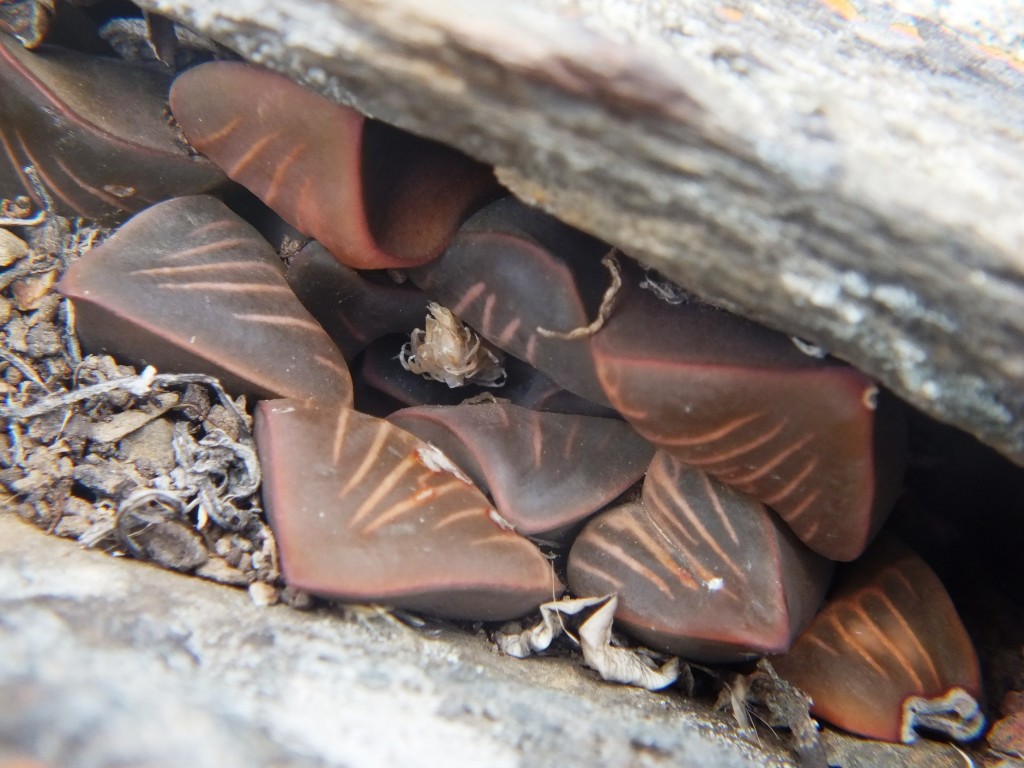
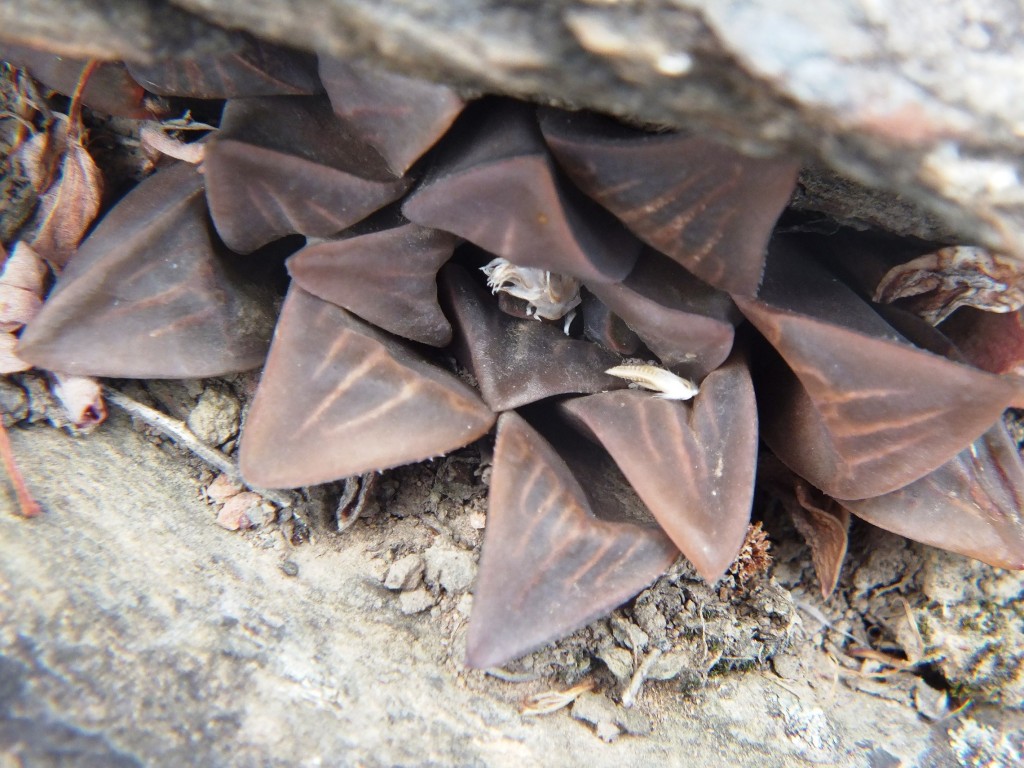

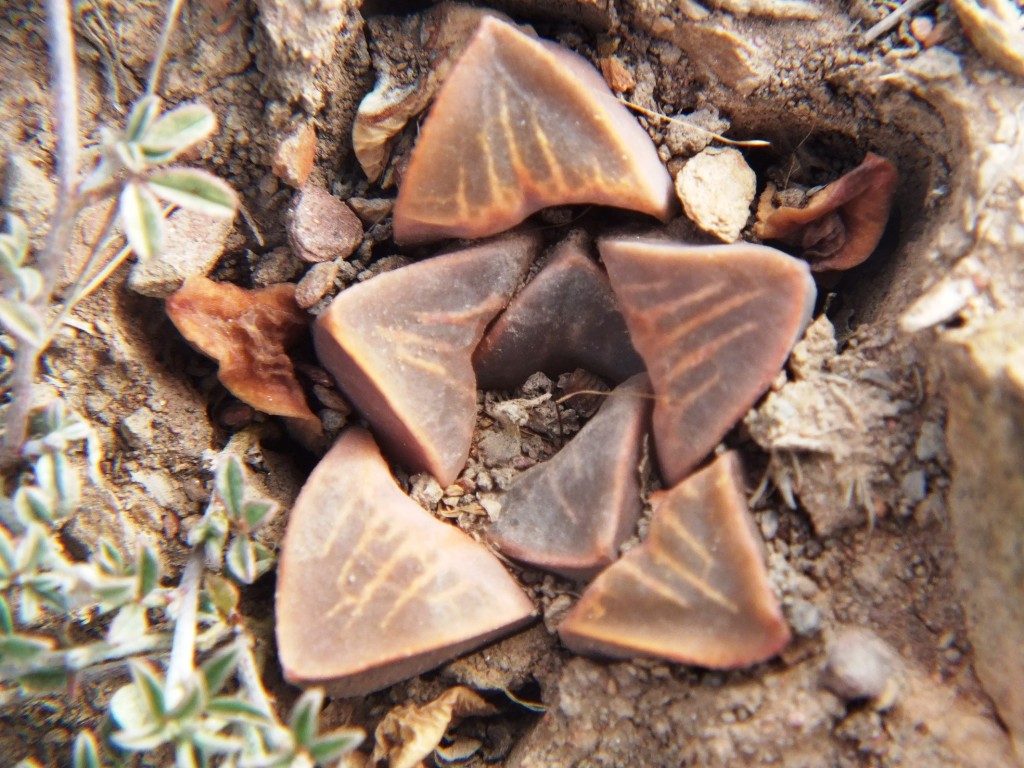

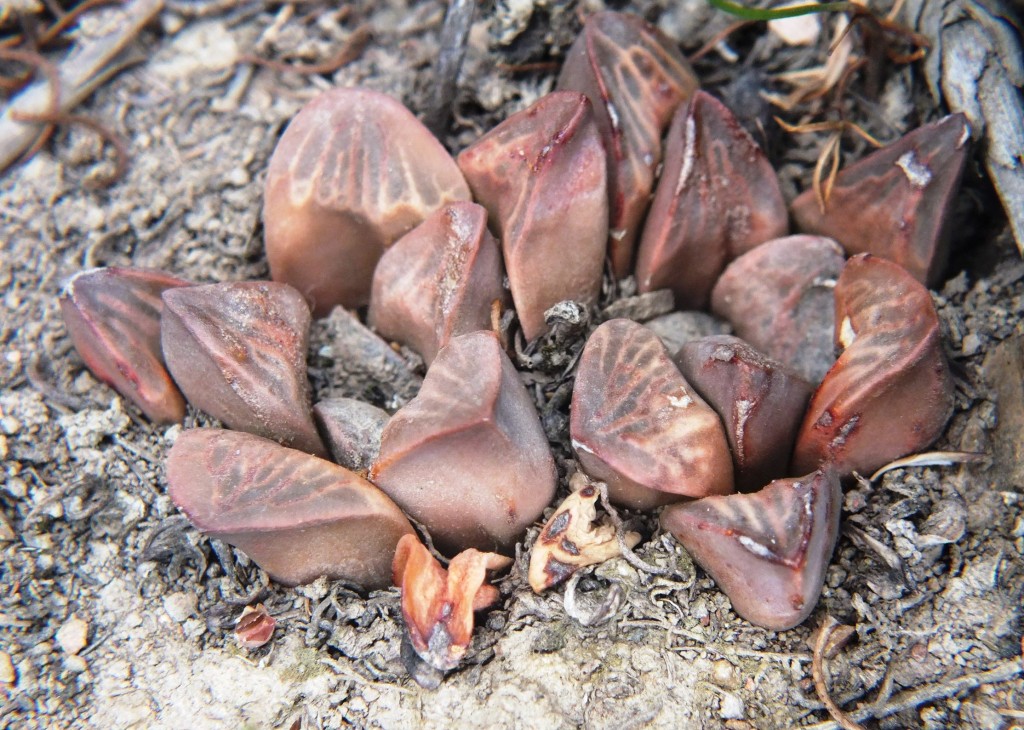


Fig. 80 7945 View lookin across depression to west facing slope
Set 4. MBB6638 H. mirabilis Rooivlei (KoeiseKop). (figs 81- 92)
It was fortunate for my story that I took pictures here. As in most of the greater area occupied by H. mutica, H. mirabilis occurs as these smaller, often (how often is often?) dark rough versions of H. mirabilis. Of particular note is the first image (fig. 81). This is of a plant with much smoother textured leaves and had there been and H. mutica in the near vicinity I would surely (mistakenly?) taken this for a hybrid because I know from experience elsewhere that summer and winter flowers can and do hybridize. But wait! Rooivlei is a unique site because there is a population of H. retusa ‘turgida’ nearby that is prominent in my whole explanation of relationships that my critics so dislike. Outside chance is that hybridisation is an explanation.

Fig. 81 6638 Rooivlei 
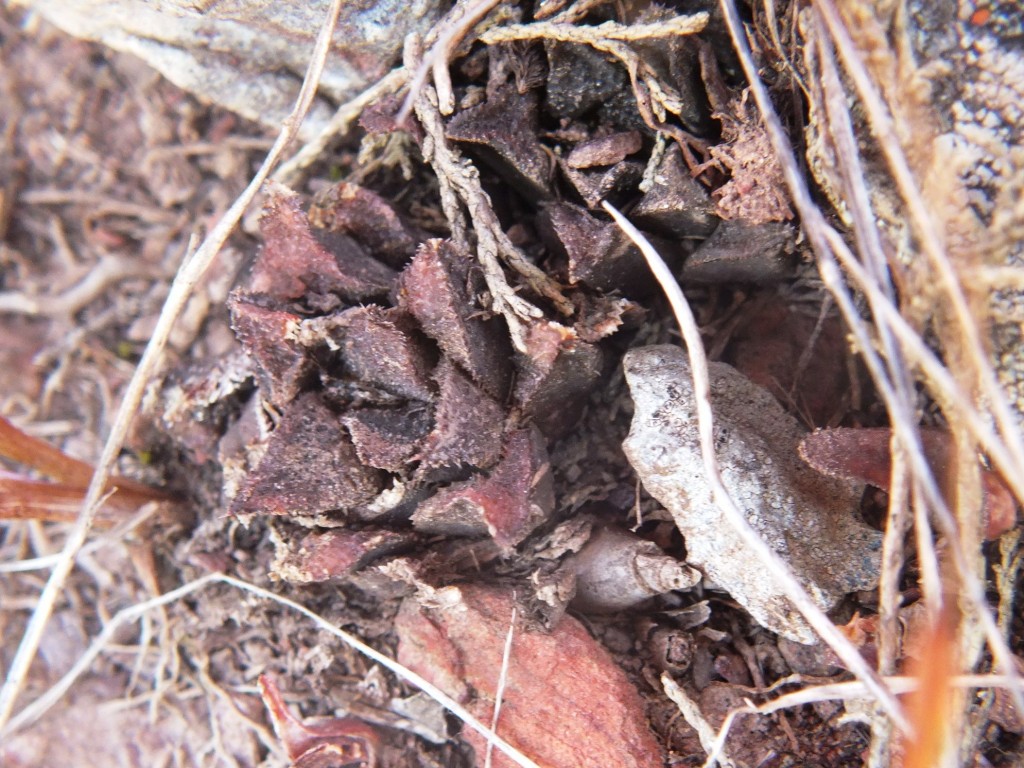
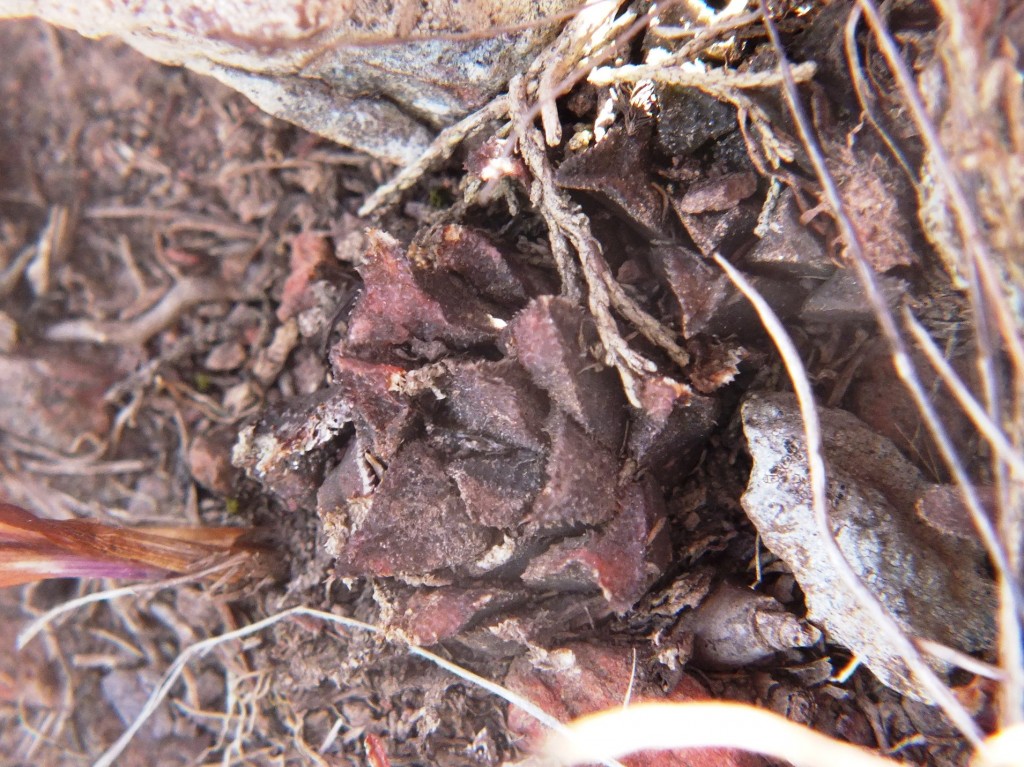


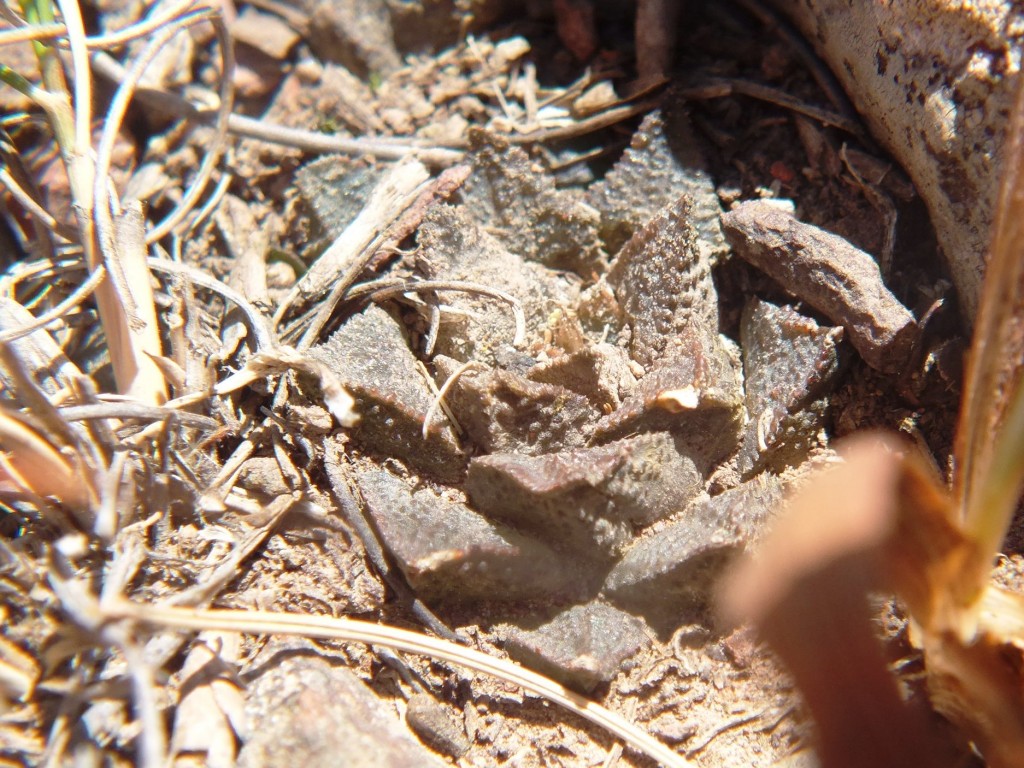

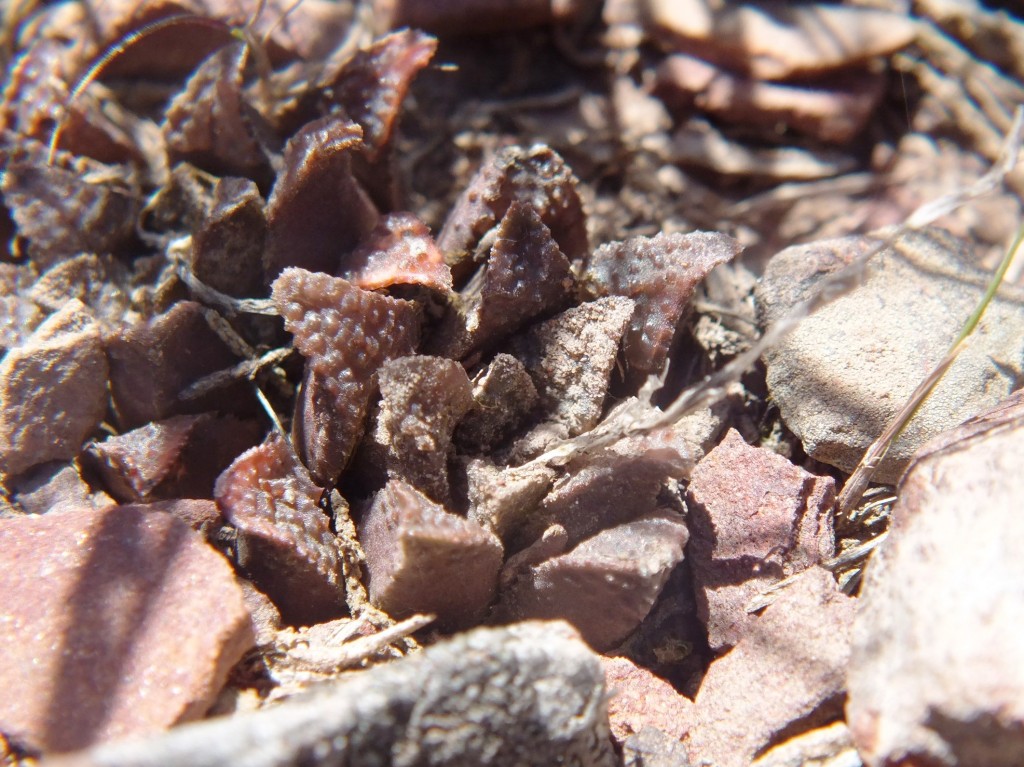

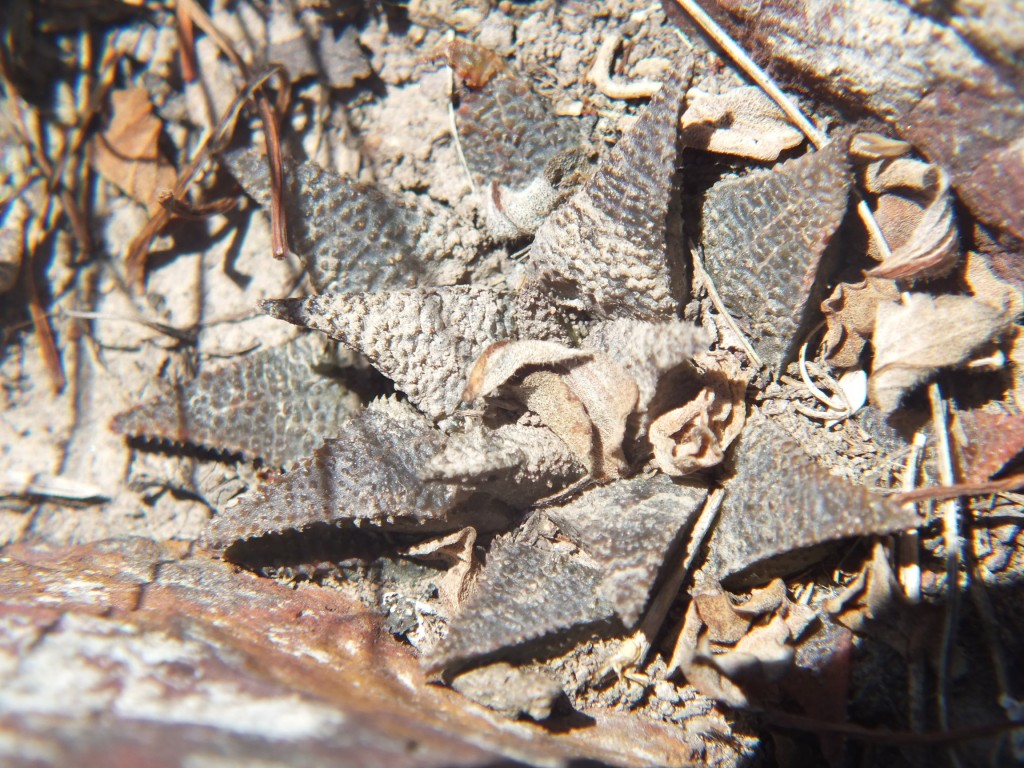

Set. 5 MBB7944a H. mirabilis SE Klipbankskloof. (figs 93-101)
I have numbered this as ‘a’ and ‘b’ for a reason. The two ‘populations’ are less than 200m apart. In fact the two H. mutica populations are not all that much more distant and there would be some debate as to whether they constitute populations at all. My argument would be that they occupy discrete separated habitats. This mirabilis population falls into middle ground. It is the upper slope where aspect changes from south to north. It is moister and the southern aspect of the small shale ridges provides mirabilis habitat. It is as if H. mirabilis is found where what I can describe is an escape route is present. These dark plants do not readily tolerate a full days exposure to direct sun and I speculate that this is the same kind of thing that happens on north-facing mountain slopes as around MacGregor. Plants are usually where the aspect allows escape from a full days worth of sunlight. The plants are much like at Rooivlei.
[ed.] images mislabeled as 7943.
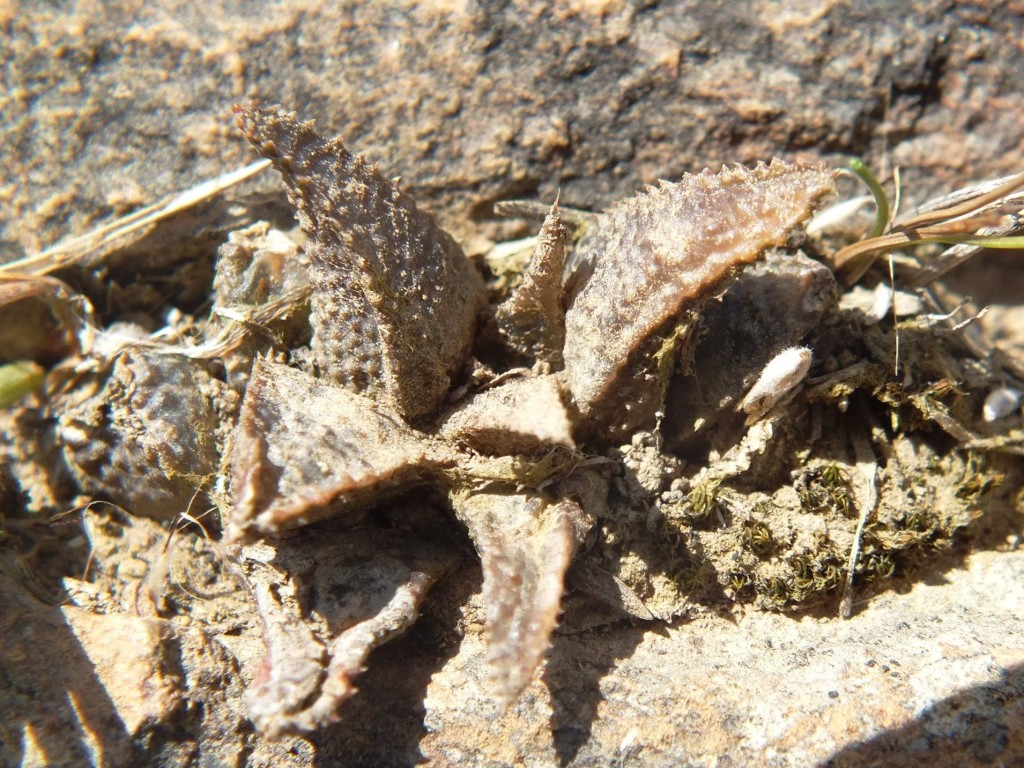
Fig. 93 7943a SE Klipbankskloof 
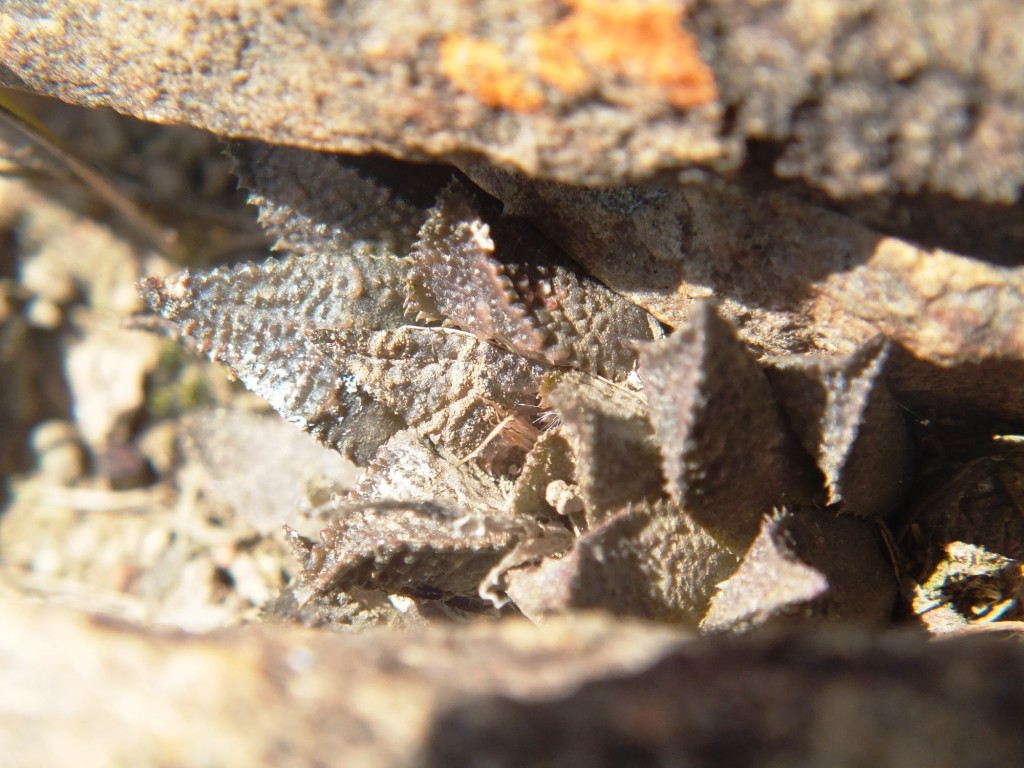
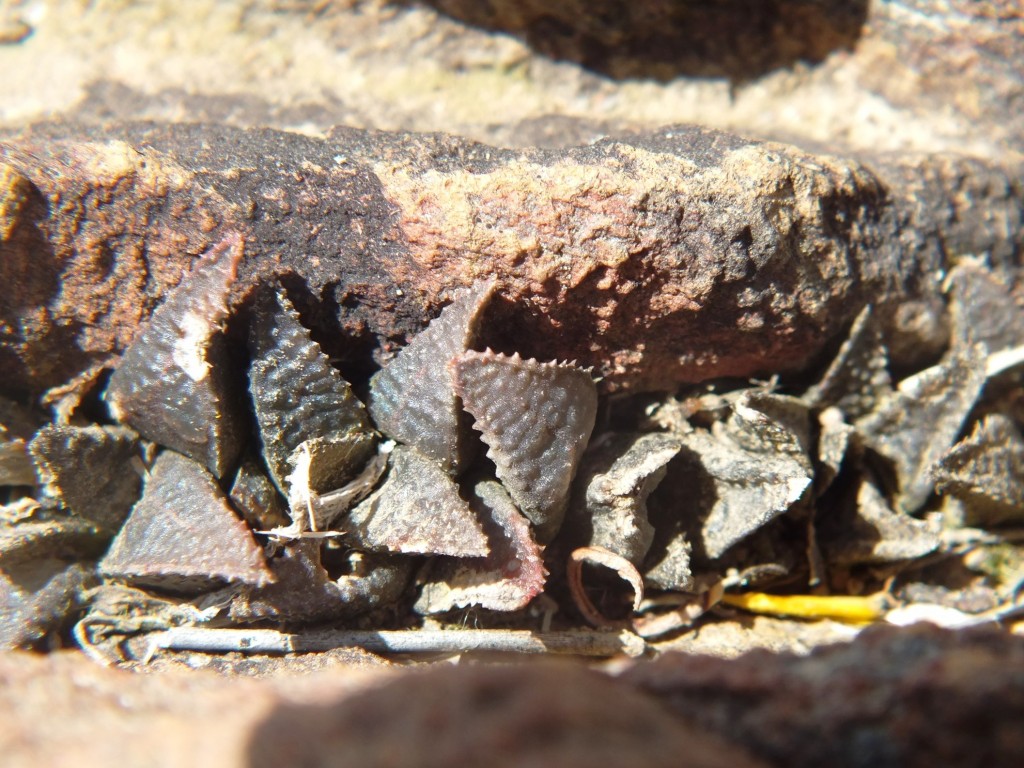

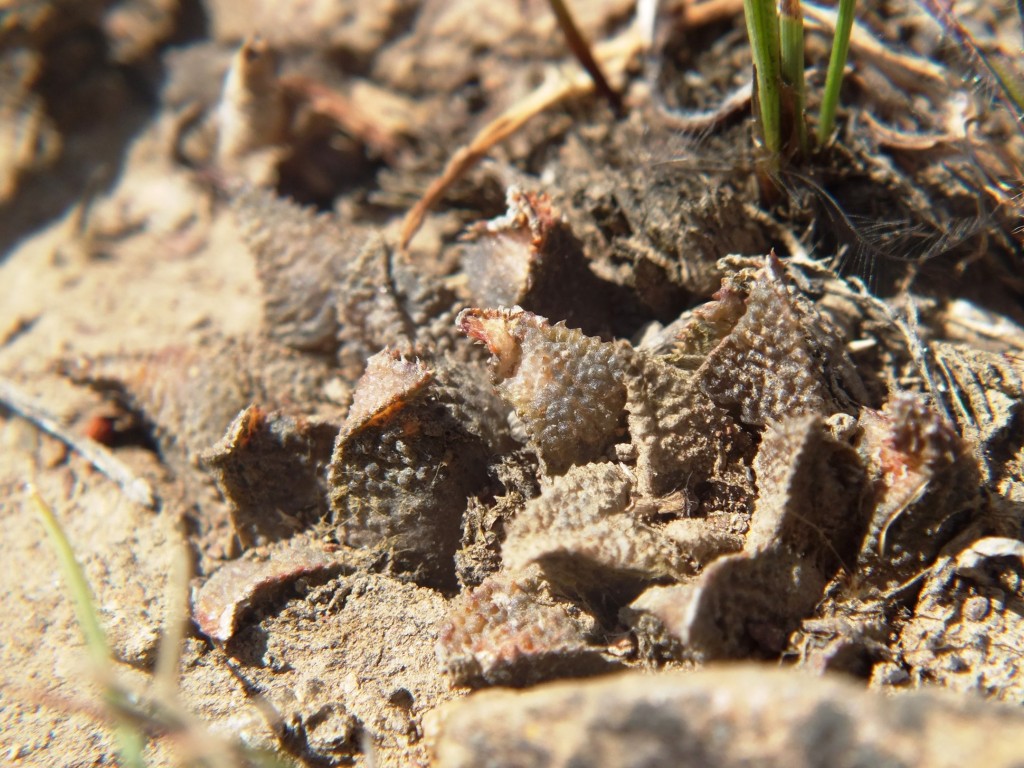
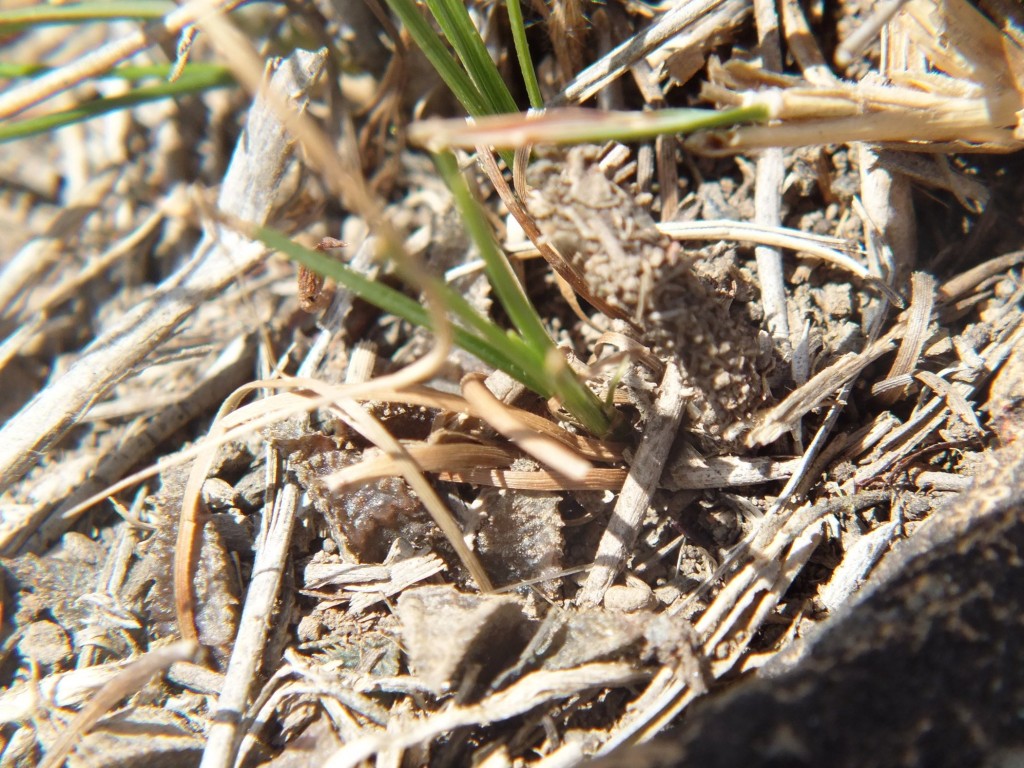
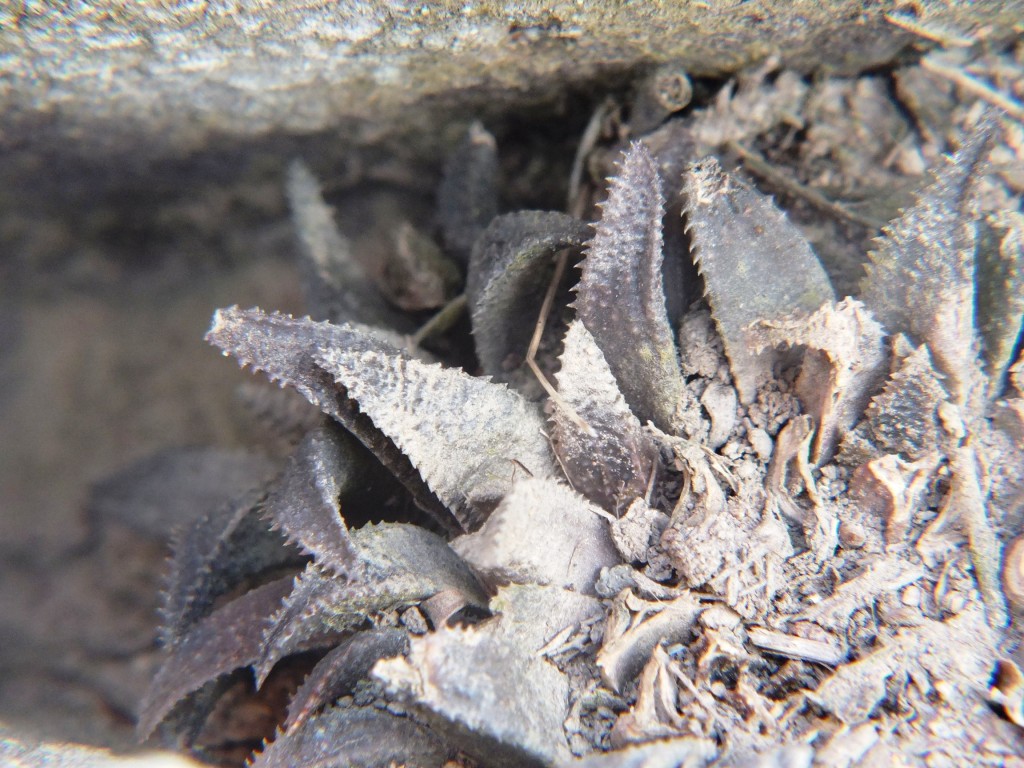

Set. 6 MBB7944b H. mirabilis SE Klipbankskloof. (figs 102-110)
The different number is because the plants are now sharing both habitat and niche with H. mutica. I do not know any other site where this happens. The two species do occur in the close general area but that is then different habitat and the distance between ranges from about 50m (Haarwegskloof) to 400m (Rondeheuwel). What is now fascinating is that some of the plants resemble fig 1 of Rooivlei and we are faced with the probability that there is exchange of genetic material between H. mutica and H. mirabilis. This is what is suggested at Rooivlei too for H. retusa ‘turgida’ and H. mirabilis (see above).

Fig. 102 7943b SE Klipbankskloof 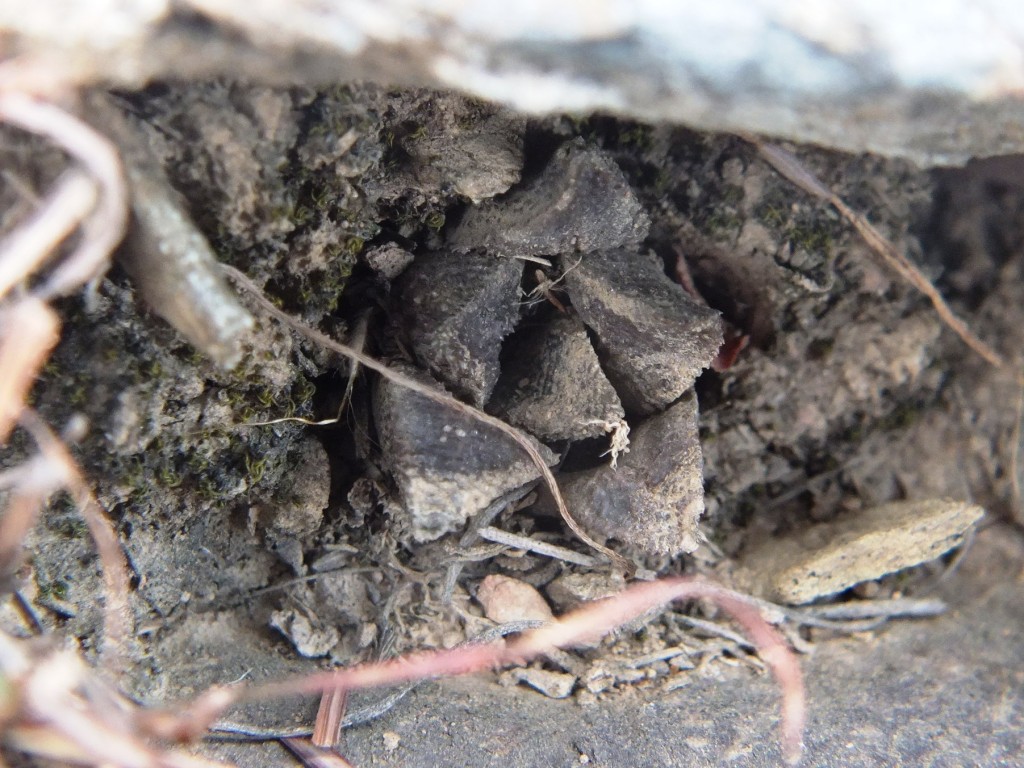
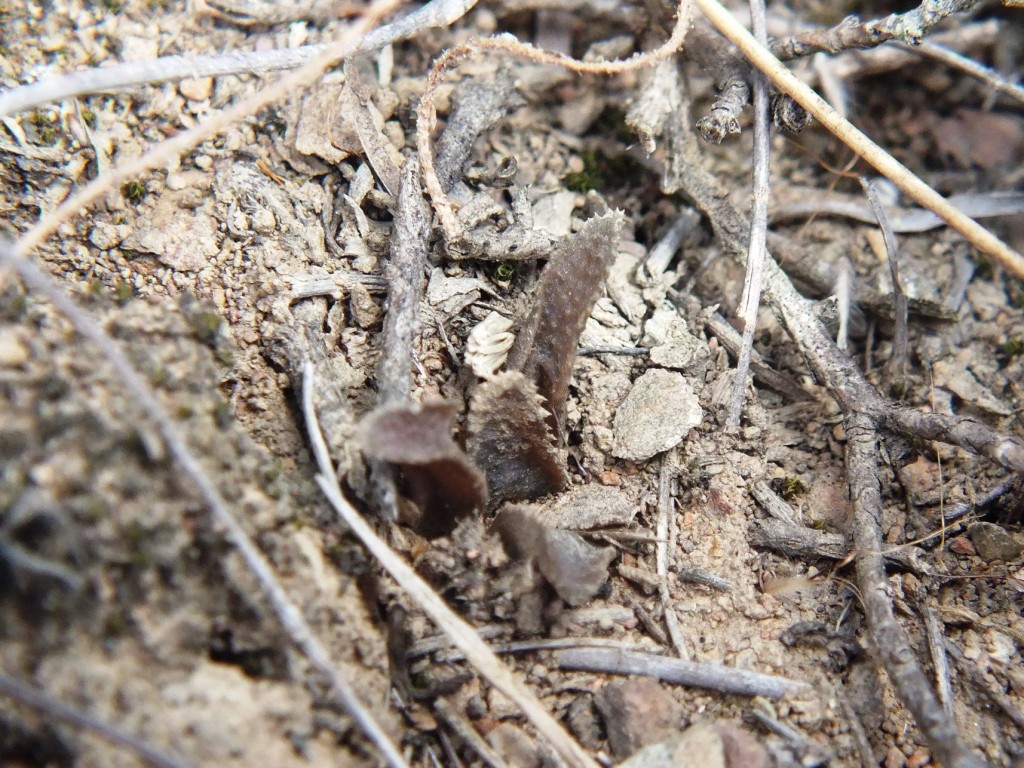
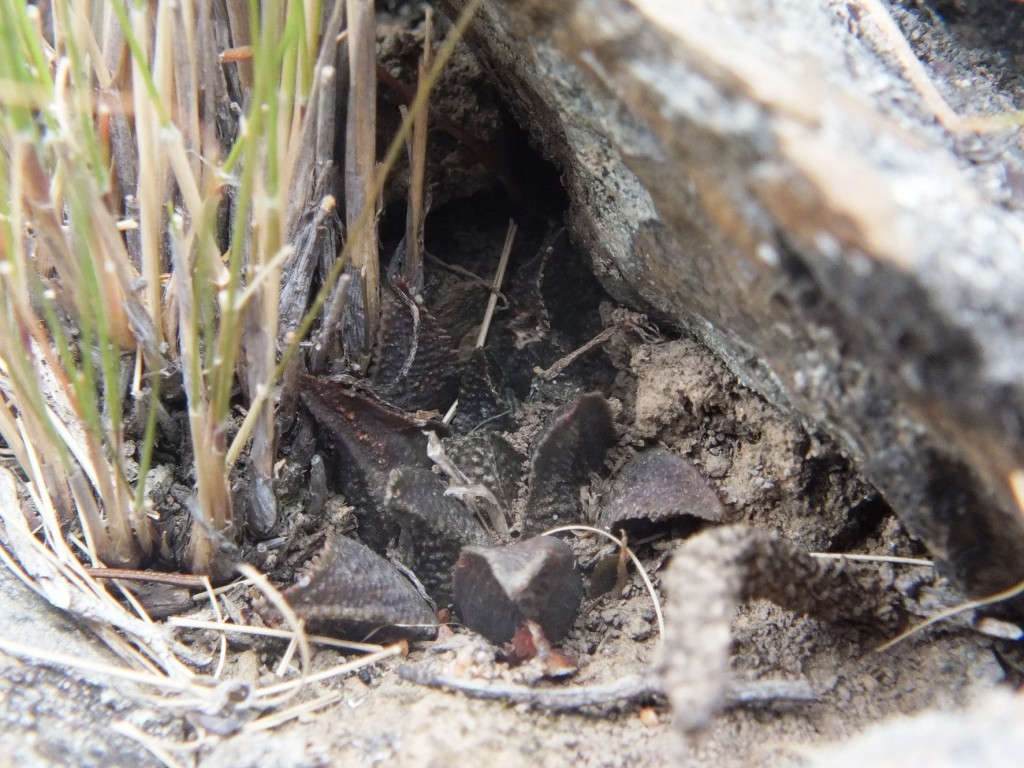
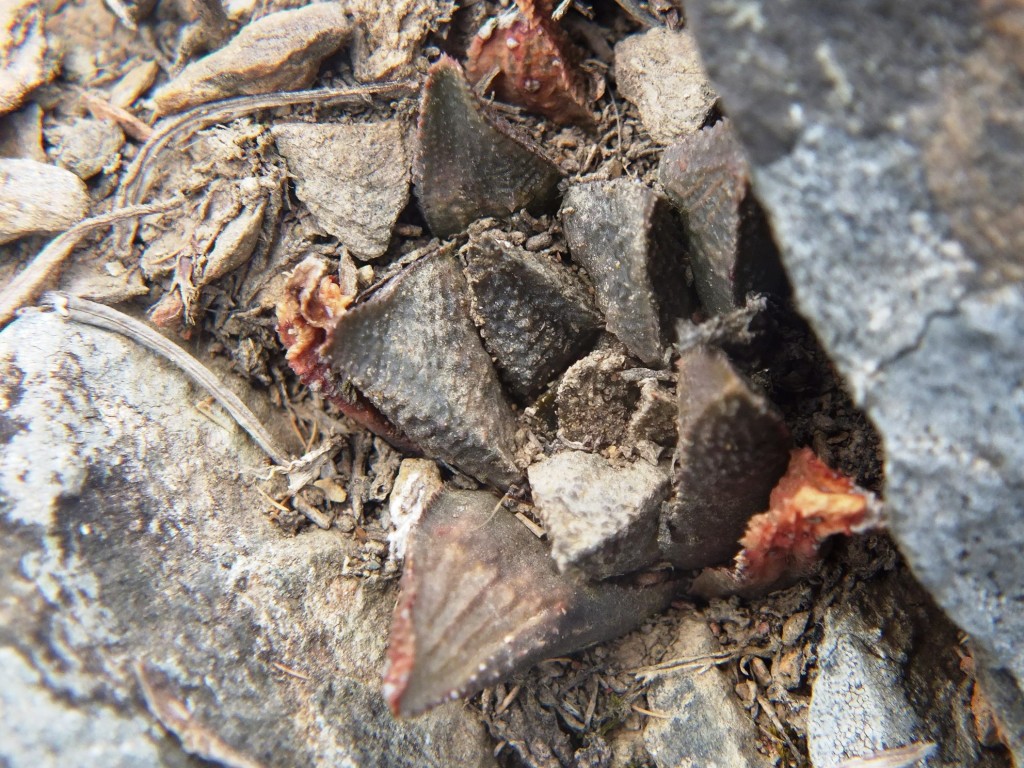

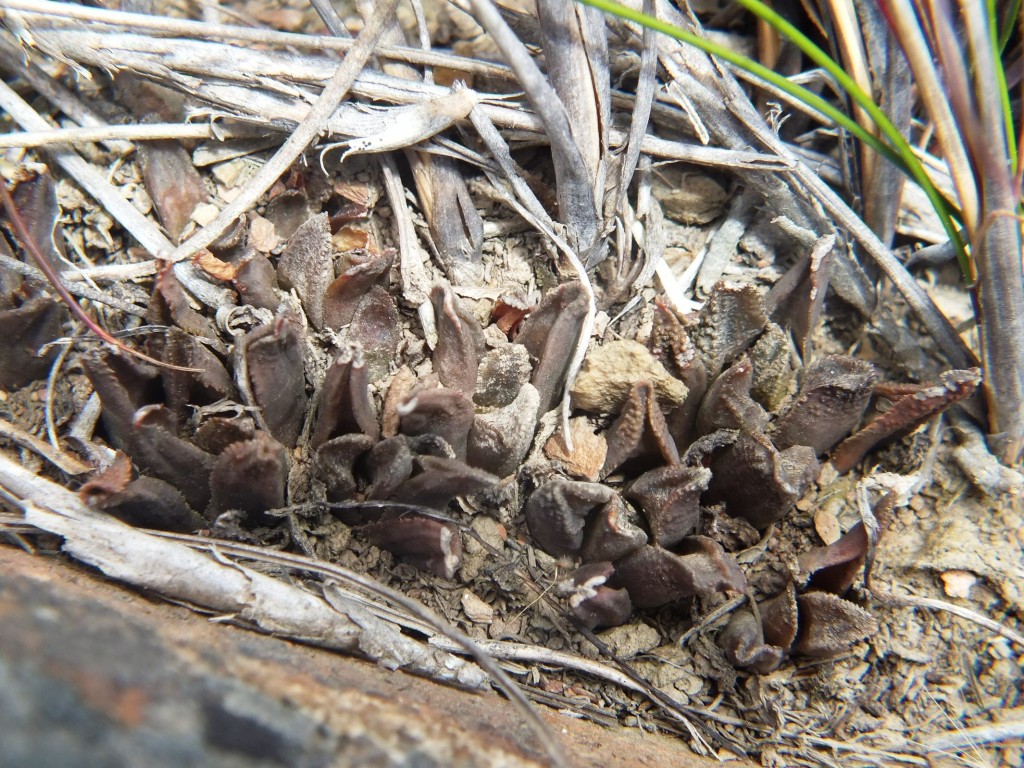
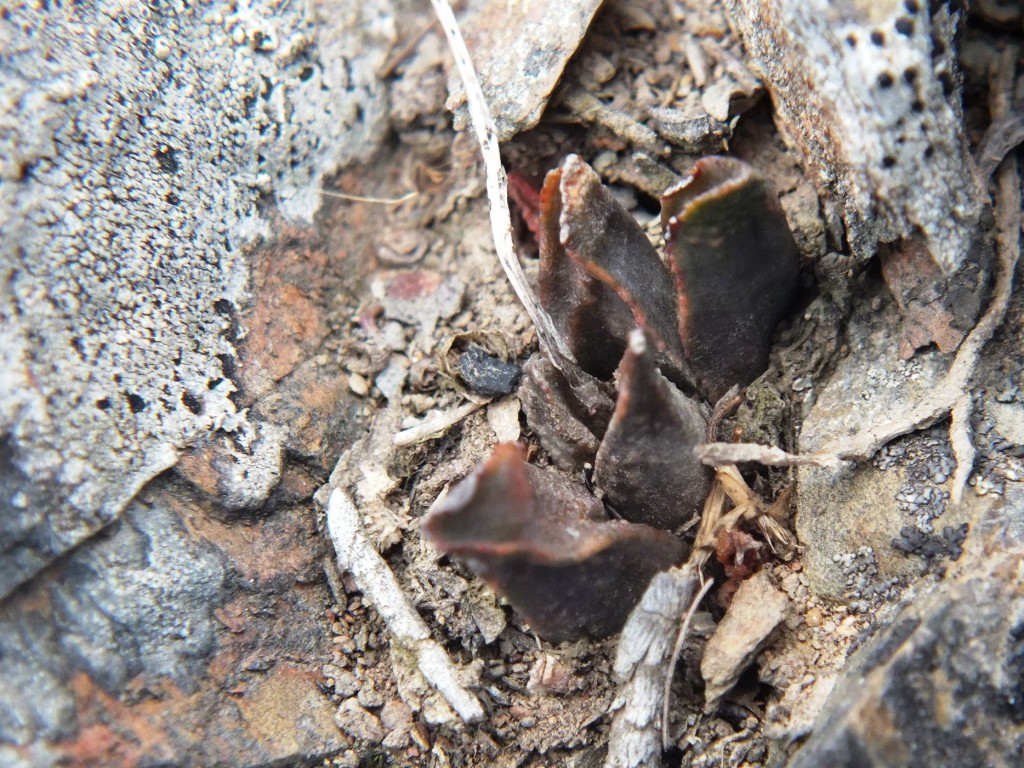
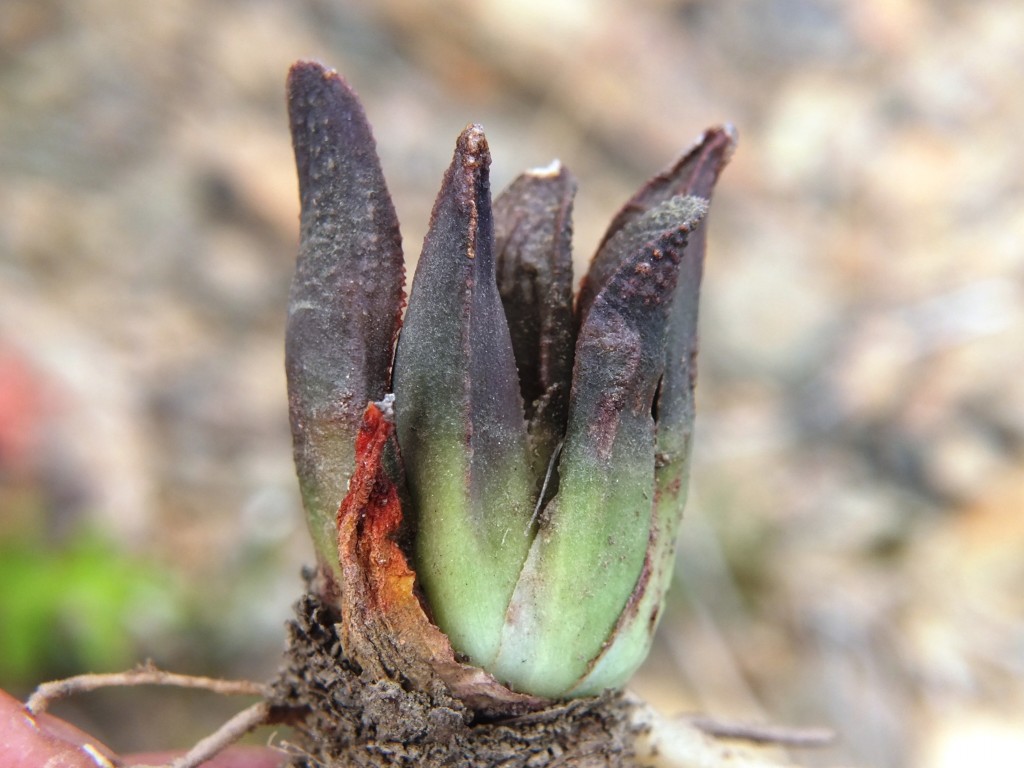
Conclusion:
None. This is purely instructive. What I gained from the trip was the realization that H. mutica would be a very good subject by which to explore variability and change with time. Also to look at conservation and impact of land-use on populations. Over to Jakub Jelimicky.
Acknowledgement
Again a list as long as an arm. Francois Uys for access to Rooivlei. Nick Helme for information in respect of Ouplaas. Odette Curtis for interest in Renosterveld conservation and contact for Nick. Johan Dutoit of Vleitjie and a friendly combine mechanic for access to Ouplaas. Wynand Dutoit of Klipbankskloof for access to what is his wife, Madrẽ’s farm.
